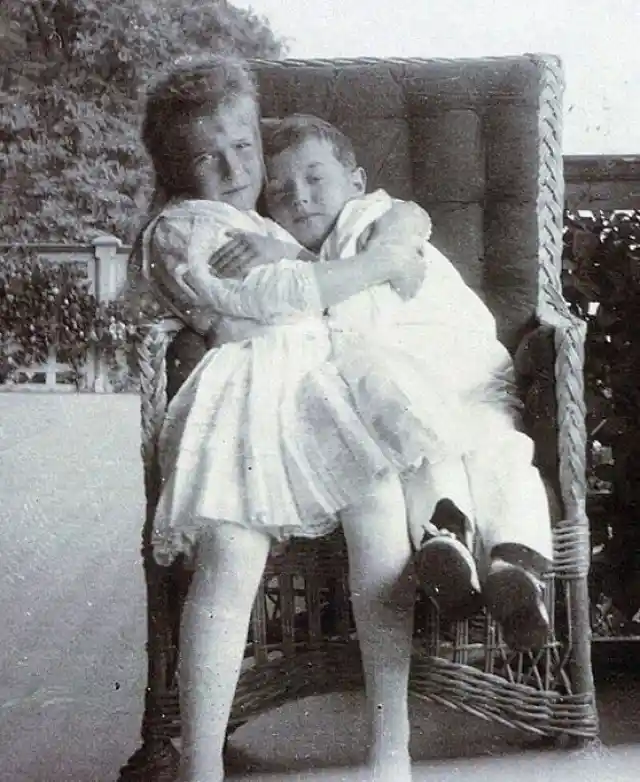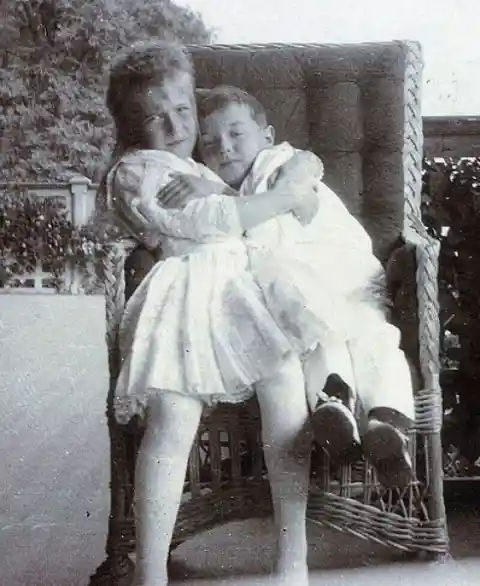The 19th century marked several changes in society including changes in technology and the struggle of European royal families which ruled the world from palaces across Europe to adapt. In many empires, whenever one family fell, it marked the end of an era of princes, princesses, castles, and kings. Even though their unfortunate ending had its impact on the world, we can still have a peep in their royal lifestyle and some noticeable moments of their humanity, humor, compassion, and love. Continue to read and you will be amazed to know about the last monarchs of the Russian Empire, their lifestyle, and how they overcame the challenges as the world changed around them.
Nicholas II Of Russia
Tsar Nicholas II- was the last Tsar of Russia who was known as Nikolai to his friends. He was born in Saint Petersburg on May 18th, 1868. He was born to Tsar Alexander III who was a tough man and a conservative leader. But opposing his personality, his son, Nicholas II was rather sensitive. While growing up, he traveled abroad at regular intervals to meet his royal relatives in their homes in Denmark, Greece, and England. Little did he know that he would meet his future wife there who was then known as Princess Alix.
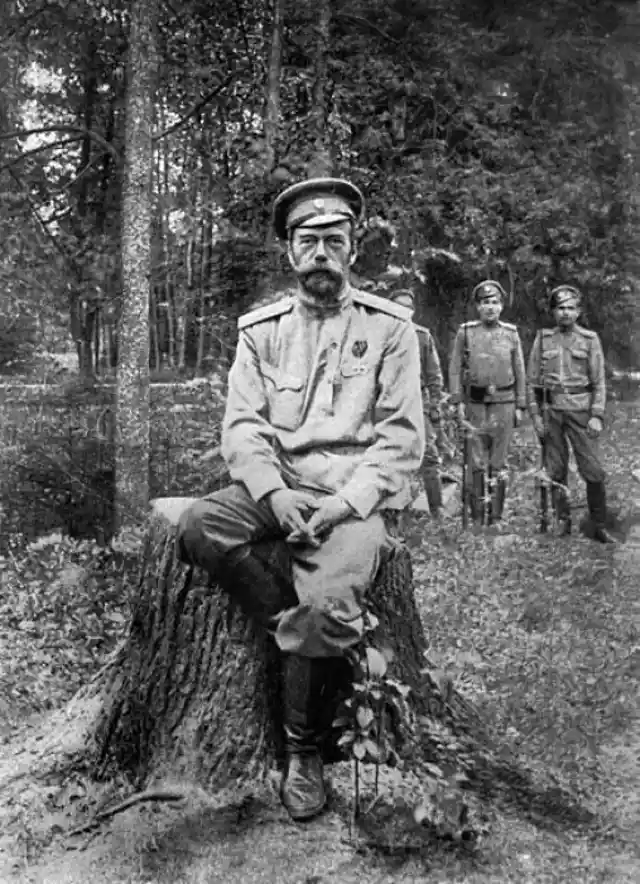
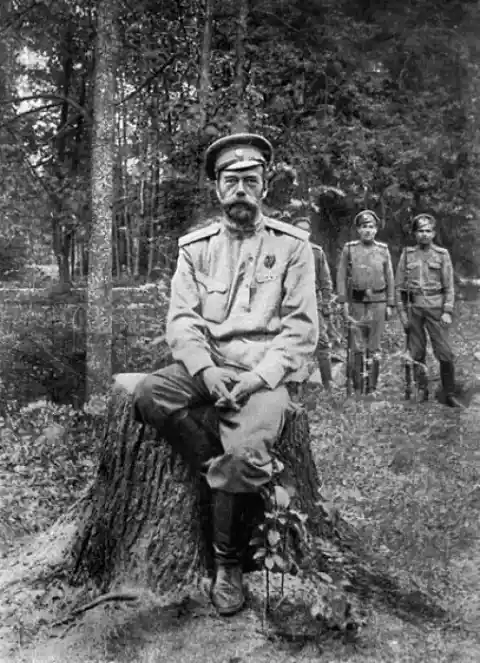
Sympathetic Man, Terrible Ruler
Even though Nicholas II was a sensitive man, he was not that good at ruling the kingdom as, over a period of time, he was responsible for many tragedies that happened within the borders of Russia. During his reign, he even witnessed a losing war with the Japanese. Because of his incompetency to be an efficient ruler, he was not much liked by people. The only things that kept him in good books were his love for diaries and photography which reflected his kind personality and his love for his family. Unfortunately, kindness is not enough when it comes to ruling the world’s third-largest empire. Nicholas II’s incompetency as a ruler cost him his throne, his family, and his life.

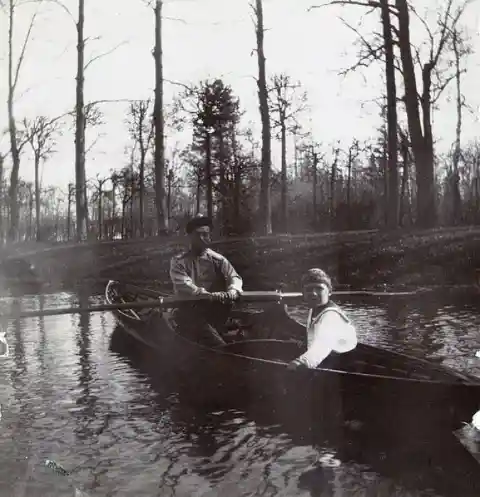
Royal Resemblance
Tsar Nicholas II of Russia had close relations with the royal families of Europe. He was so closely related to them that his appearance resembled another great emperor of Europe- his cousin, King George V of the United Kingdom. The picture below clearly depicts the resemblance of Tsar Nicholas with King George V in which they are standing next to each other wearing German military uniforms in Berlin.
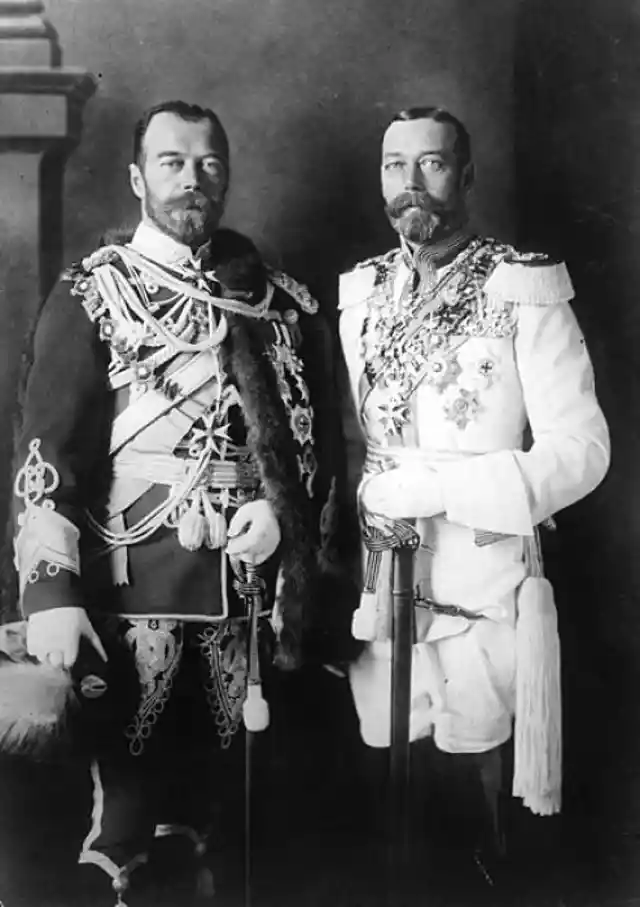
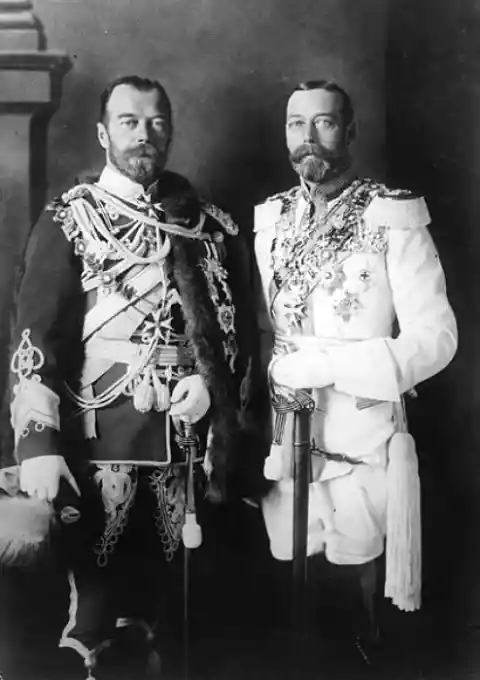
Empress Of Russia
Alexandra Feodorovna is the Empress of Russia who was born as Princess Alix of Hesse and by the Rhine in Darmstadt, Germany, on June 6th, 1872. She was the daughter of the house of Hesse who rules the United Kingdom today, Queen Victoria was her grandmother. Alix’s early life was no less than a tragedy as her mother and one of her sisters died in an epidemic when she was a young girl, and this trauma had a deep effect on her.
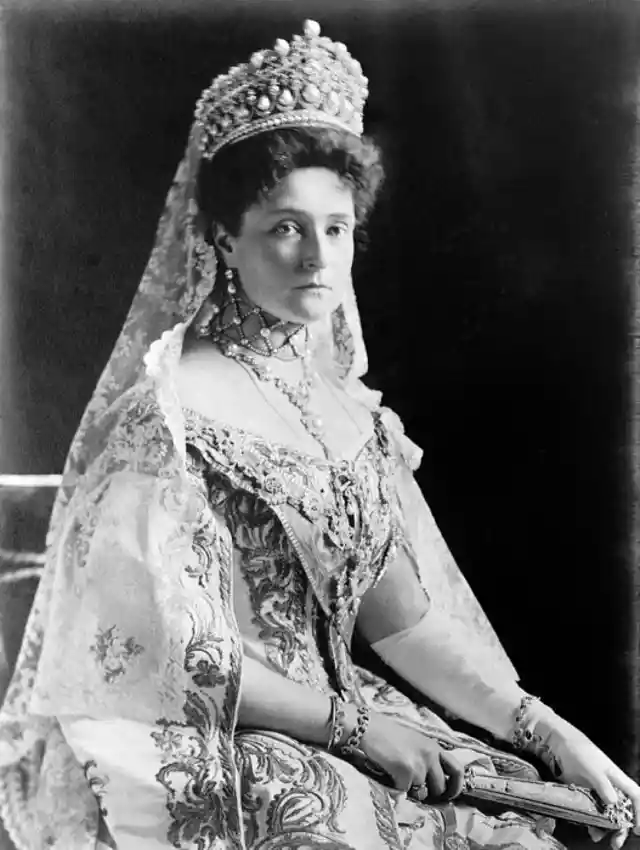
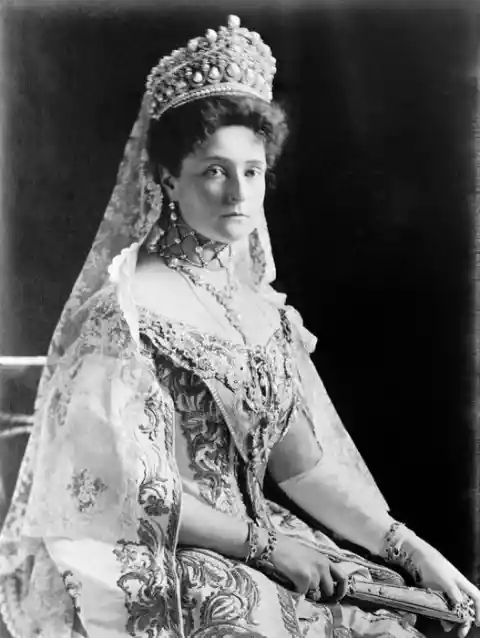
Meeting Nikolai For The First Time
After losing her mother and sister, Alix grew close to her British relatives and spent long durations of time visiting and staying with them. She was considered to be Queen Victoria’s favorite grandchild and the Queen wished and hoped for Alix to become the Queen of England herself. But When Alix met with Nikolas II, her second cousin in Saint Petersburg, and fell in love with him, she refused this option. Nikolai’s father was against this union, as he was a little hostile to Germany, but some time later he gave in to his son’s wish on his deathbed and accepted Alix into his house.
But for Alix to marry Nikolai, she had to undergo religious conversion and convert to Orthodox Church. After conversion, she was renamed Alexandra Feodorovna and became Tsarina- the Empress of Russia.
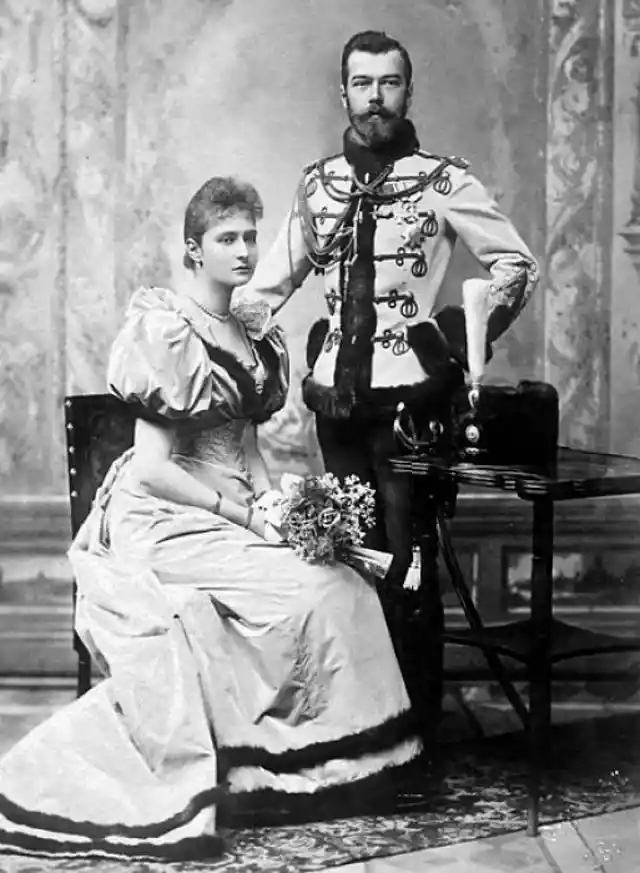
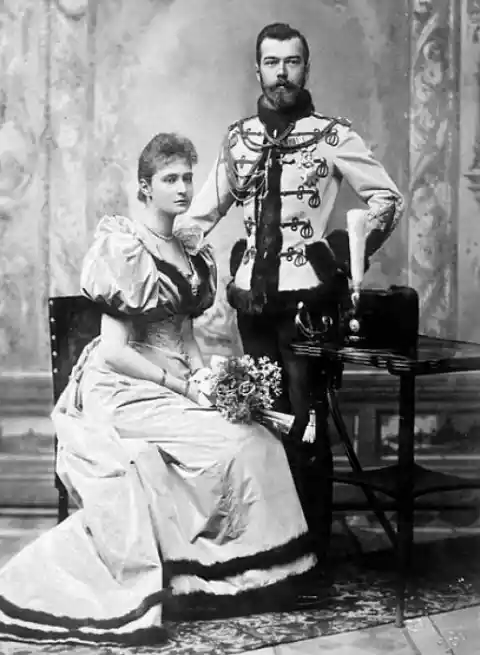
Arrival Of OTMA
After their marriage, Tsar Nicholas II and Alexandra Feodorovna had five children out of which the eldest four were girls. Even though the Tsar belonged to the Russian monarchy and his wife belonged to German royalty, they still had connections to British royalty and especially with Alexandra’s grandmother, Queen Victoria. This is the reason why their daughters even though Russian grew up bilingual and spoke English fluently amongst themselves. They were so fond of each other that they adopted a nickname for themselves which was made up of an acronym of their names in the order of their birth: Olga, Tatiana, Maria, and Anastasia… or OTMA. And they even used to sign their diaries using their group nickname and sent postcards to family and friends using the same nickname.
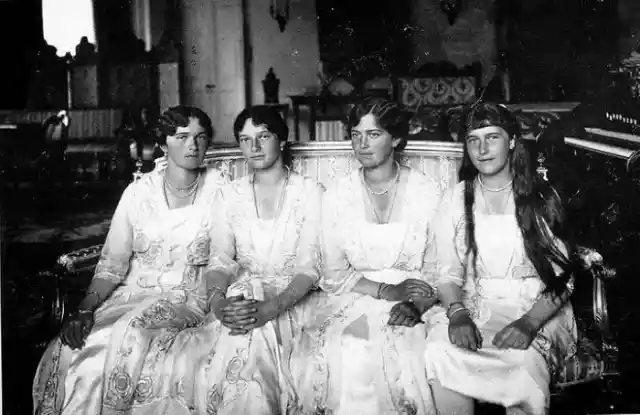
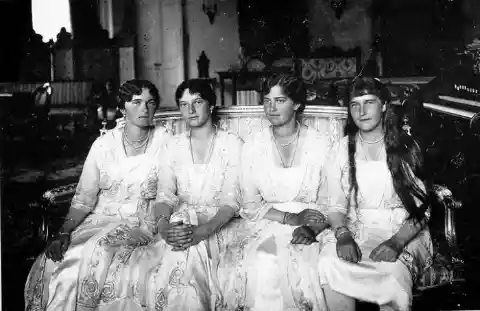
The Elder Pair Of Romanov Sisters
Out of the four Romanov sisters, the elder two, Olga and Tatiana were known as the Big Pair while the younger ones Maria and Anastasia were labeled the Little Pair. The elder pair grew up together as best friends and lived together in a room. During the first World War, both the sisters even volunteered at Red Cross together, alongside their mother.
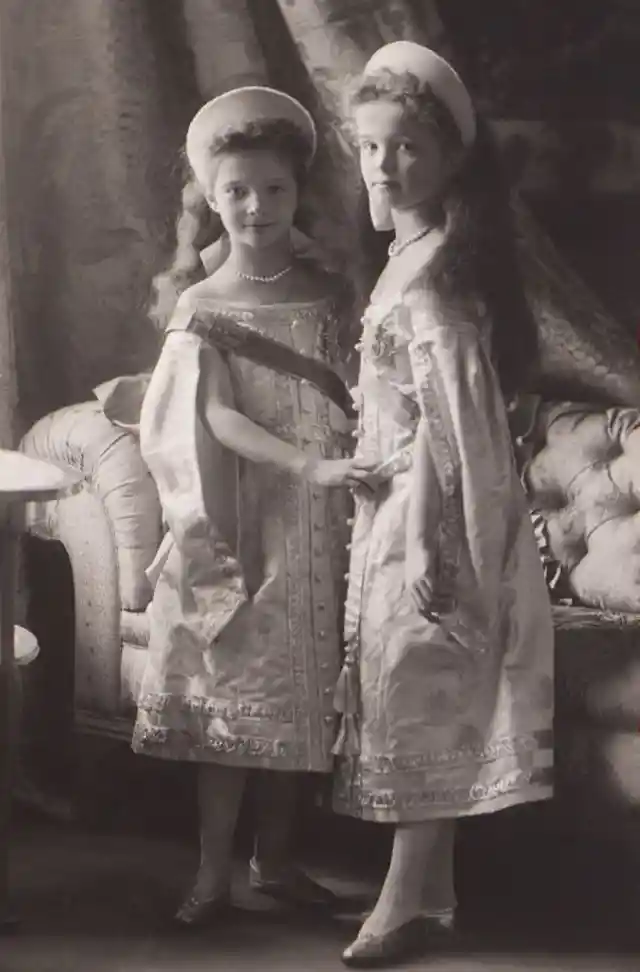
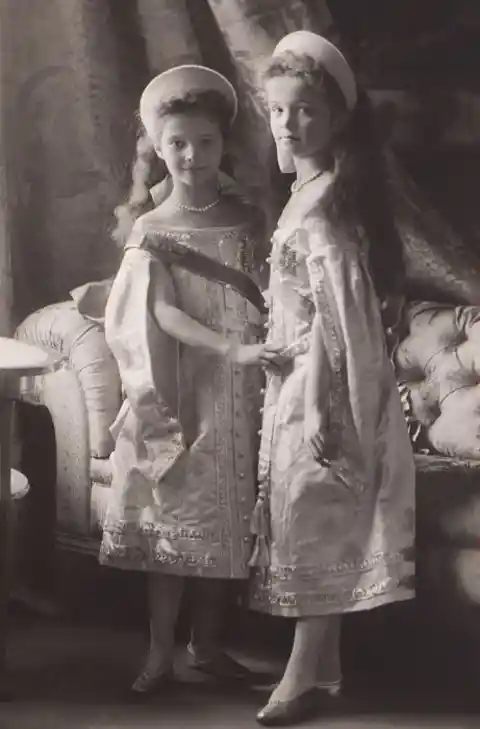
The Eldest Romanov Sibling- Olga Nikolaevna
Olga Nikolaevna was the eldest Romanov sibling and Grand Duchess of Russia. She was born in Saint Petersburg on November 15th, 1895. Wit, compassion, and quick temper were some of the traits that very well defined the personality of Olga. Besides, she was the responsible kid of the family, who took care of her sickly youngest brother, the Tsesarevich Alexei. Except for being an avid reader, she was a sensitive and moody girl who had strong feelings of patriotism for her country. It was her patriotism only which drove her and her sister Tatiana to volunteer at Red Cross, to serve and treat wounded Russian soldiers.
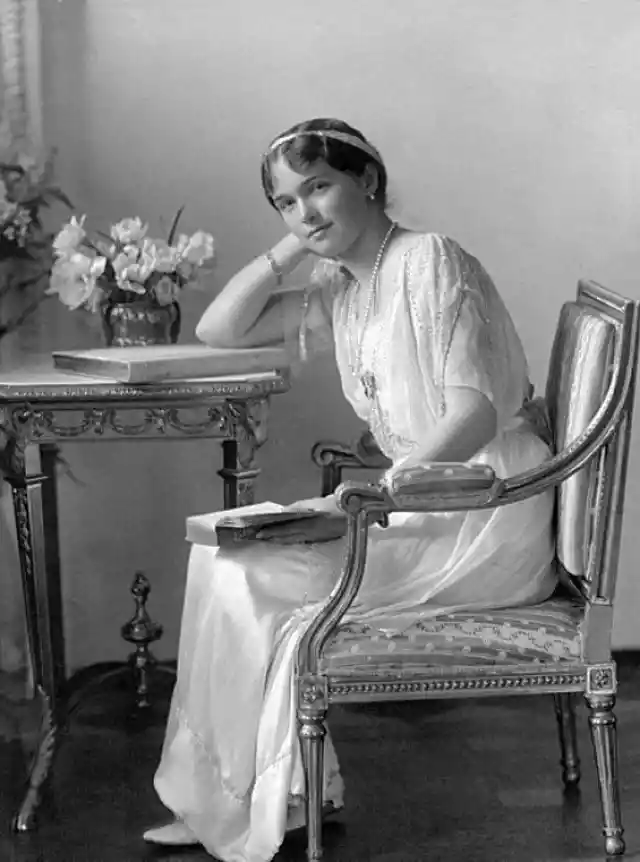
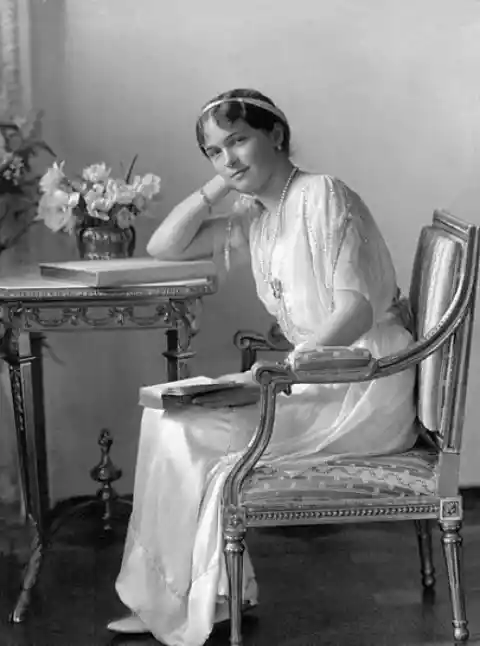
Second Daughter Of Tsar
Tatiana Nikolaevna who was born in Saint Petersburg on June 10th, 1897, was the second daughter of Tsar and his wife and Grand Duchess of Russia. Tatiana was well known for her exceptional good looks and many suitors from Russia and abroad pursued her too. Similar to her other siblings, Tatiana also had a modest upbringing and was made to sleep on hard cots with no pillows and took cold baths every morning. She had the habit of being called by her first name only and rarely recognized herself when anybody called her by royal name. One incident that proved this habit of hers is when one day her lady Sophie Buxhoeveden was waiting for her and called her, “Your Imperial Highness”, she was so shocked to be addressed by her title that she kicked her under the table and hissed “Are you crazy to speak to me like that?”

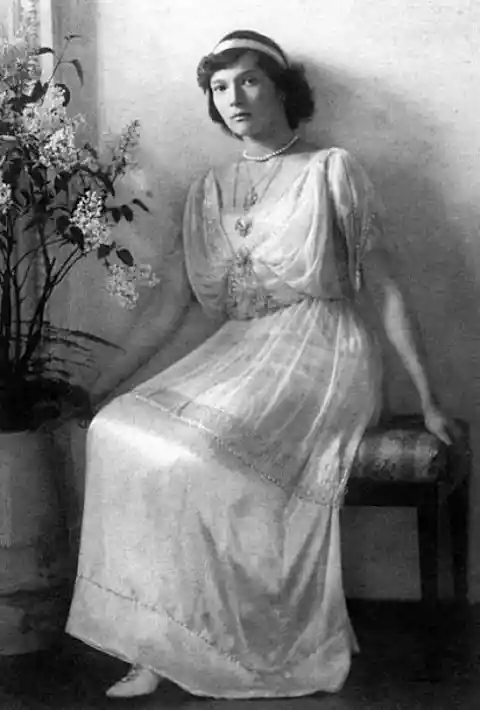
The Title Of Governess
Even though Tatiana was a little arrogant and tough, still she was titled Governess by her siblings because she had strong motherly instincts. Also, out of all the siblings, Tatiana was closest to her mother and often spent long hours reading to her. Her nurturing and motherly personality traits can be seen in her work during WWI. Being practical and rational, Tatiana performed an excellent job in her work at the Red Cross, and led a committee which was named after her, and that committee worked for the aid and relief of war refugees during World War I.
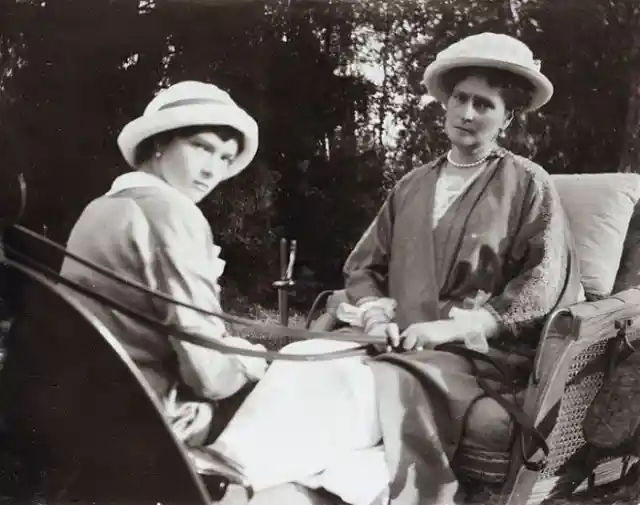

The Younger Siblings
Maria and Anastasia were the younger siblings of the Tsar family who shared a room together. On many occasions, they could be seen dressing in similar clothing. They were titled the Little Pair. The little pair’s bedroom was next door to their sisters’. It looked similar to their sisters’ room in style except the frieze in the room which showed butterflies in roses stenciled above gray-painted walls.
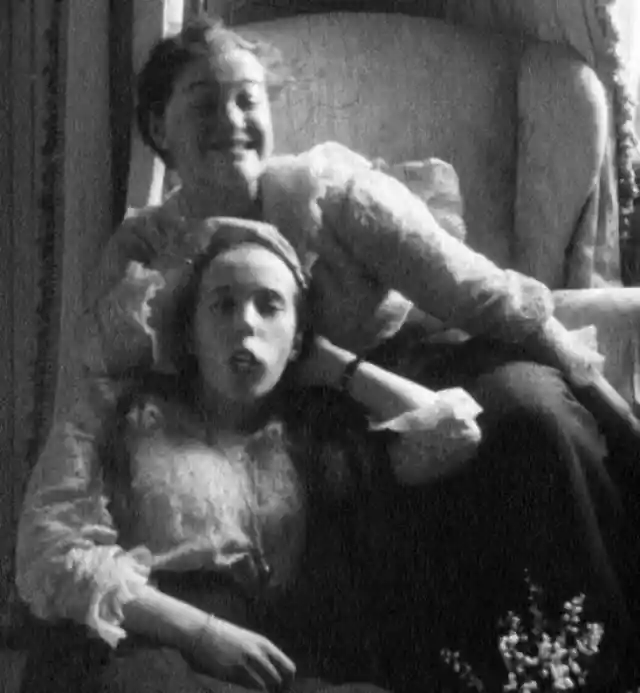
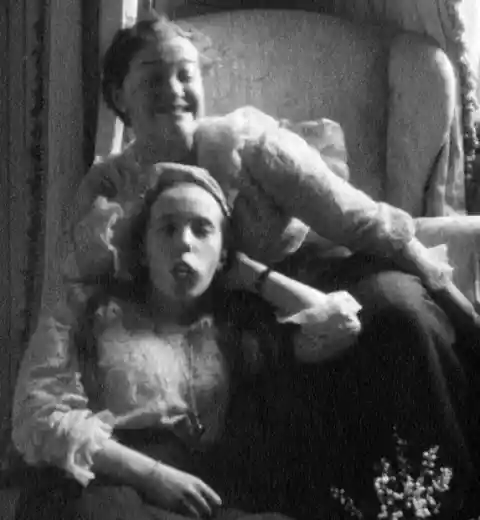
The Third Romanov Sister
The third Romanov sister, Grand Duchess Maria was born on June 26, 1899, in Saint Petersburg. She was known especially for her gentle and kind nature and would often take the blame for her sisters’ mischief. Grand Duke Vladimir Alexandrovich of Russia, gave her the nickname “The Amiable Baby” because of her gentle nature. Maria was very much fond of her father as a young child as she would often run off “to Papa”, and would kiss a small portrait of his before falling asleep.
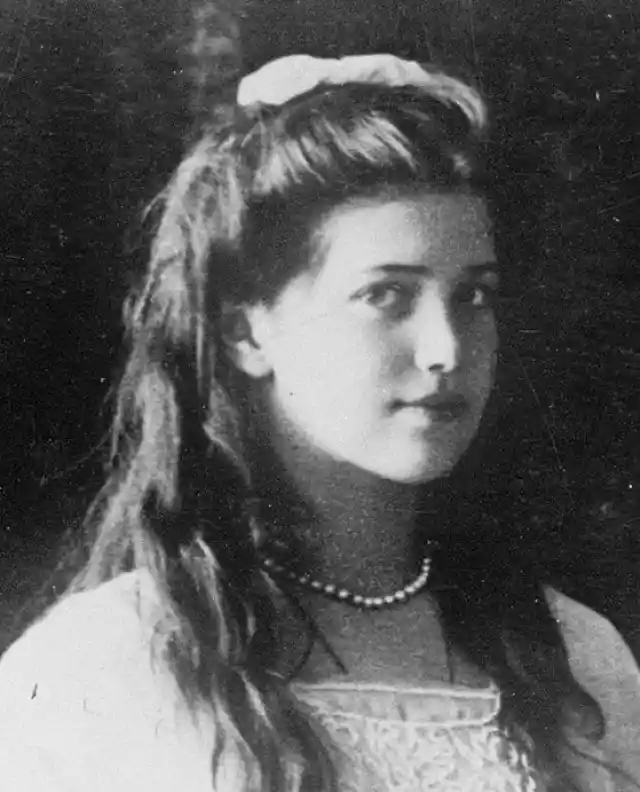
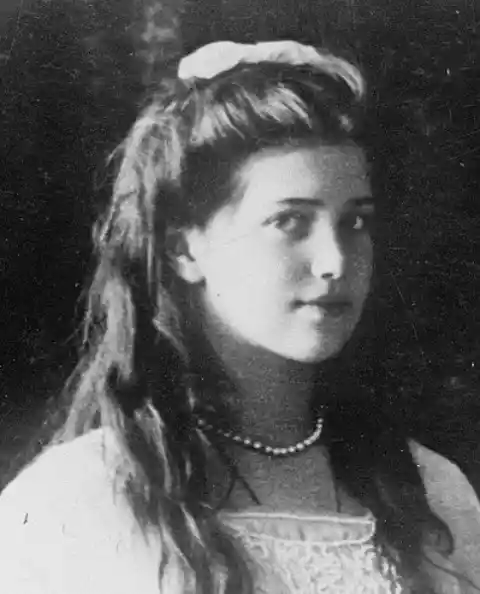
Being Kind And Lovable To Soldiers
As Maria was too young to accompany her sisters to be a nurse during the war. So, she decided to be the patroness of a hospital and visited wounded soldiers. Her love and kindness for soldiers were noticeable by everyone around her. The rumors were that she even had several innocent crushes on young and strong men she met and wished to marry and have a large family with them. Margaretta Eagar, the children’s governess who wrote a book about working with Romanovs reflected and remembered how, “One day the little Grand Duchess Marie was looking out of the window at a regiment of soldiers marching past and exclaimed, 'Oh! I love these dear soldiers; I should like to kiss them all!'"
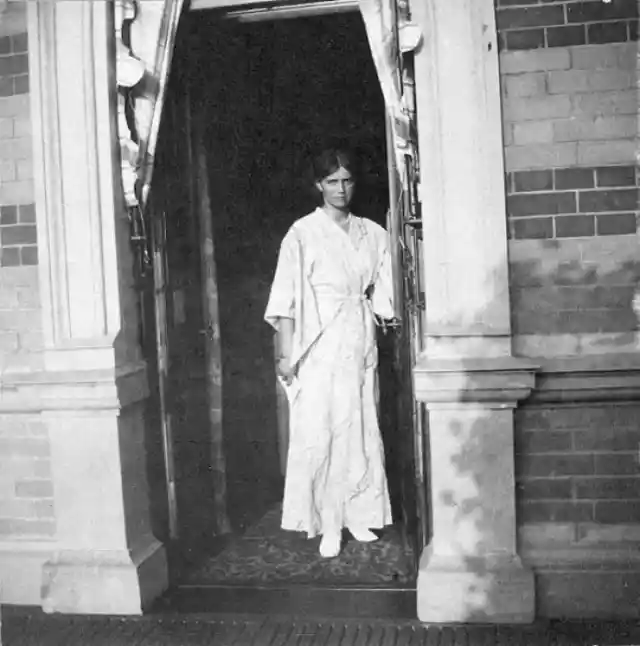
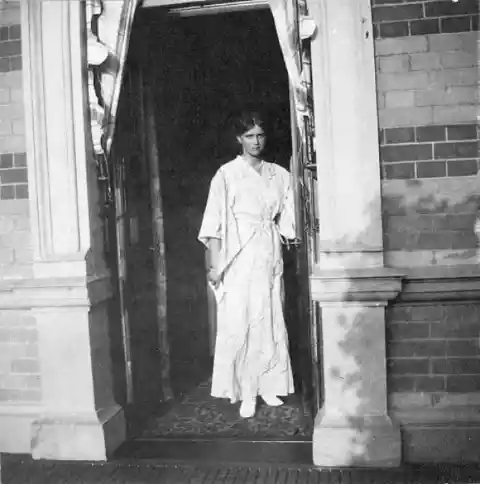
The Youngest Of OTMA Group
The youngest of the OTMA group, Duchess Anastasia Nikolaevna of Russia was born in Saint Petersburg on June 18th, 1901, and was the first of the Romanovs to be born in the 20th century. Being the youngest of the OTMA, she was the most mischievous and energetic of all. She would often run around the palace, playing tricks on palace staff, and was a talented actress. To this day, Anastasia is perhaps well-known for her portrayal in 20th Century Fox’s Animation Studios’ animated film Anastasia which presents a fictional depiction of what her life may have looked like after the Russian Revolution.
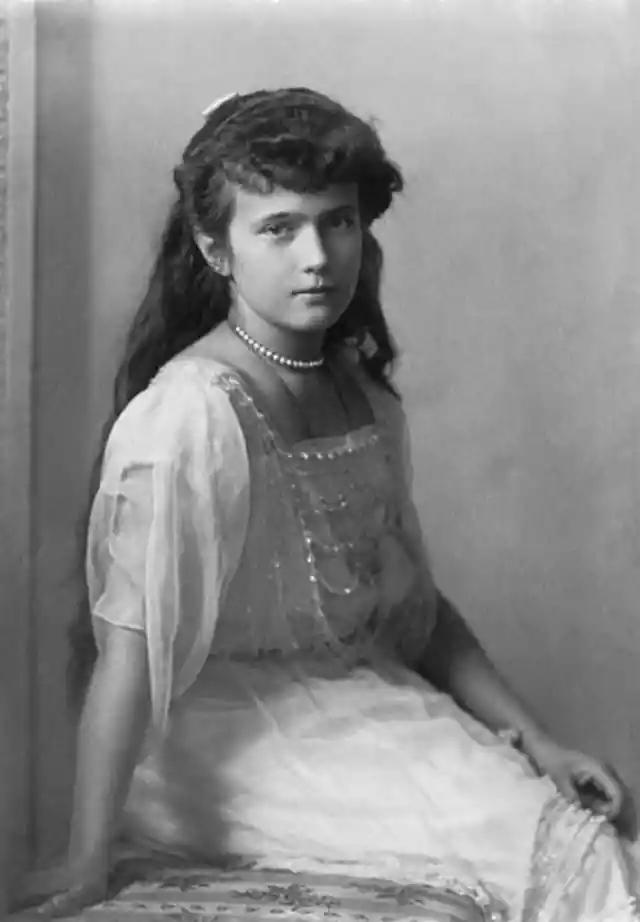
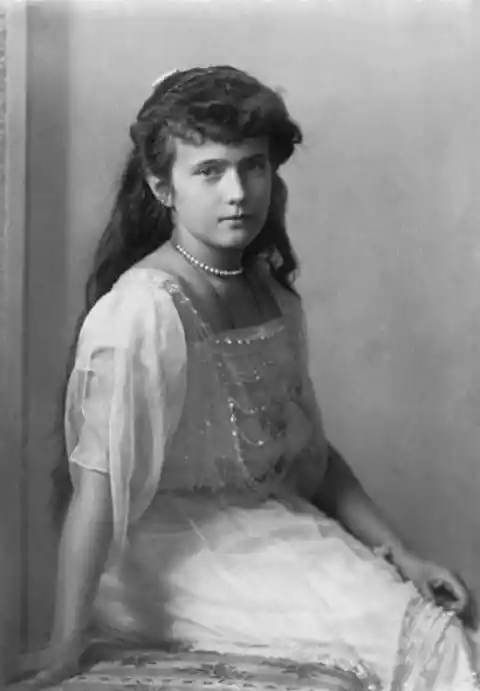
Welcoming The Male Heir
Even though Nicholai II had immense love for her daughters still his need to have a male heir made him anxious. He was so much concerned that when Anastasia, the youngest daughter was born, he had to take a long walk to compose himself before visiting Alexandra and their infant. Hence, the Tsar family finally welcomed their male heir Alexei Nikoalevich’s on August 12th, 1904.
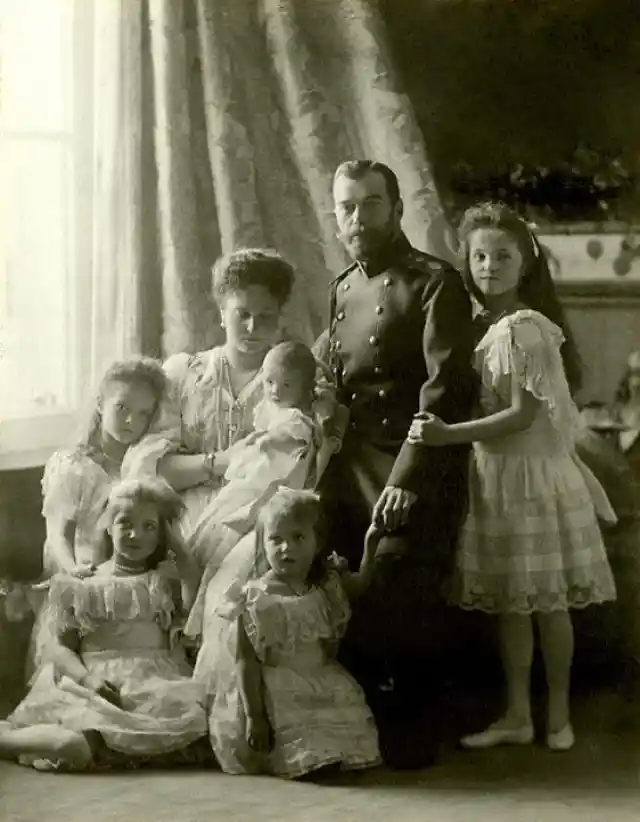
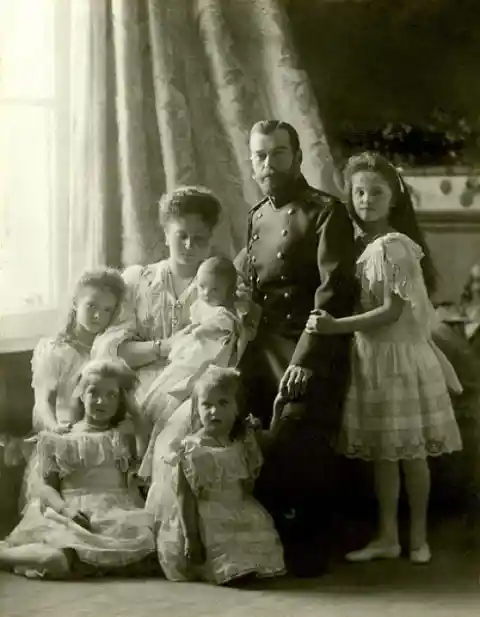
The Only Son Of Tsar Family
Alexei was the youngest child of the Tsar family and he was expected to fulfill all the hopes and dreams of the family. Everyone in the palace including his parents, sisters, and tutors adored him. His tutors said that he would cheer up the mood of the entire palace whenever he was feeling well. But to his bad luck, he would not feel healthy quite often.
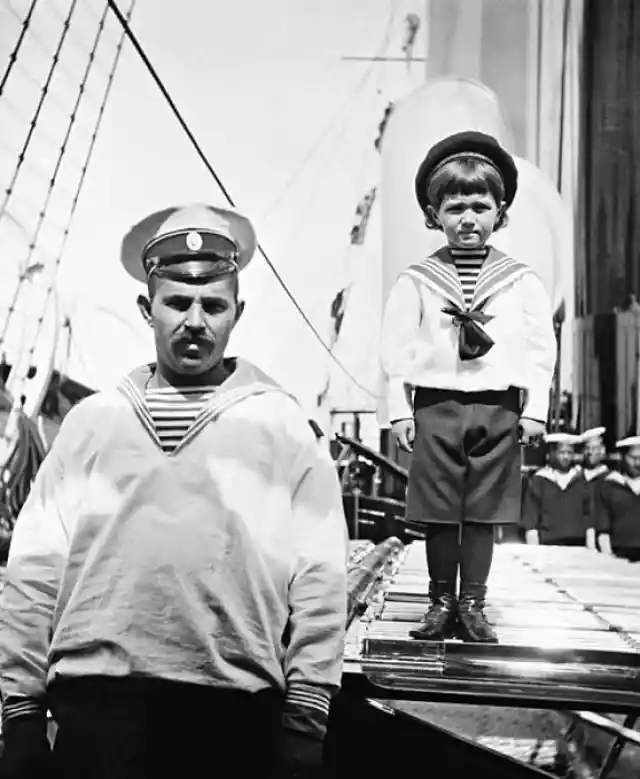
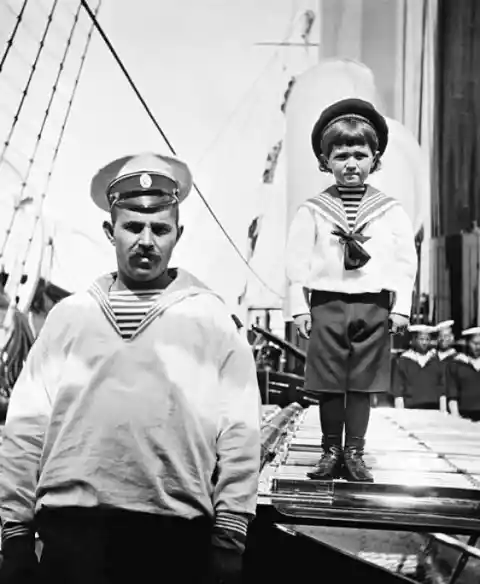
Genetic Disorder
Unfortunately, Alexei was born with a genetic disorder, Hemophilia prevalent throughout the royal families of Europe. It was believed that this disorder had been passed onto him through his brother whose older brother had died of hemophilia-related complications. This is the reason why as a child, Alexei had to live a protective life as even a minor injury would prove life-threatening to him. As he was the only male child of the Tsar family, the repercussions of anything happening to Alexei would have been disastrous on them. Similar to any other child, Alexei was also an active and intrusive child, therefore, keeping him safe from scrapes and bruises was a major task, and the Tsar soon came up with a solution.

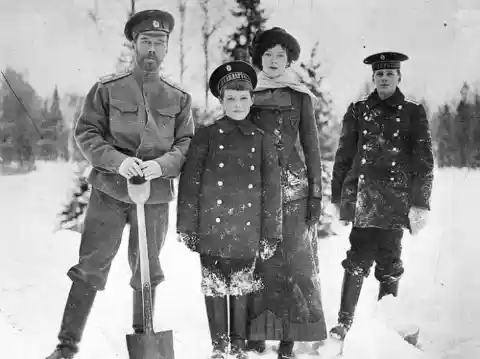
Appointing Officer-Nannies
To protect Alexei from harming himself, the Tsar and Tsarina appointed two sailors from the Imperial Navy- Petty Officer Andrei Derevenko and Seaman KlementyNagorny to take care of him at all times. They would drive him around on bikes as Alexei was prohibited from riding one himself. Sometimes, they even carried him in their arms from place to place. As Alexei’s condition as an heir was delicate, his disorder was kept a military secret and only a few trustworthy people were told about it. But they had no idea that one of these trustworthy people would eventually contribute to the downfall of the Russian Empire.
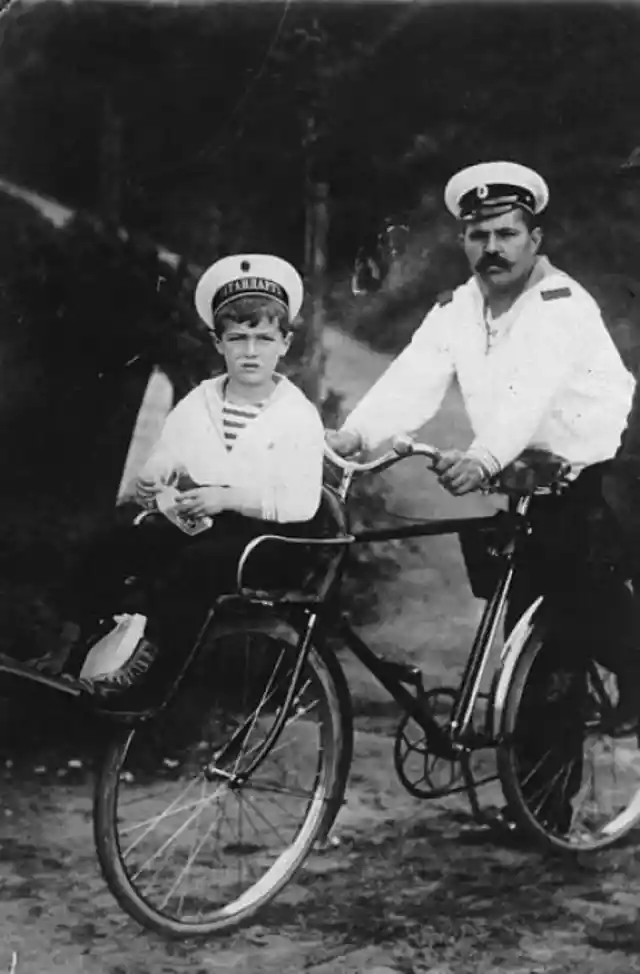
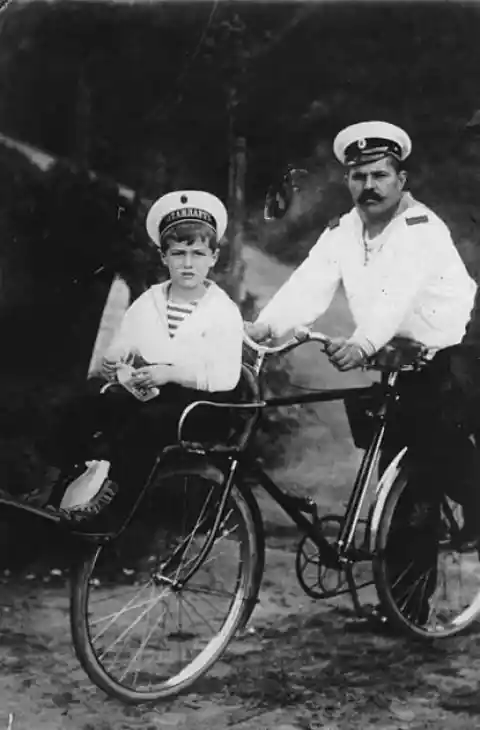
Being Close To His Father
As Alexei was the descendant of the throne, he spent a lot of time with his father to learn from him. For instance, during World War I, he lived with his father at the army headquarters in Mogilev and observed military life. When he was 12, his father sent him to accompany a General who lost his son. Alexei said, “Papa told me to come sit with you as he thought you might feel lonely tonight." Just like all other Romanov men, Alexei was prepared for duty. He grew up wearing sailor uniforms and lead long meetings with government ministers.


Grigori Rasputin
Alexei often remained sick and back in the 20th century, treatment of hemophilia was difficult and not much efficient. Many times, Alexei was hospitalized and on the verge of death because of minor injuries which horrified his mother Alexandra as she had suffered death in her family as a child. Therefore, when Grigori Rasputin who was a mysterious mystic and a faith healer from the frozen wastelands of Siberia arrived in Saint Petersburg, Alexandra didn’t think twice before giving him a chance.

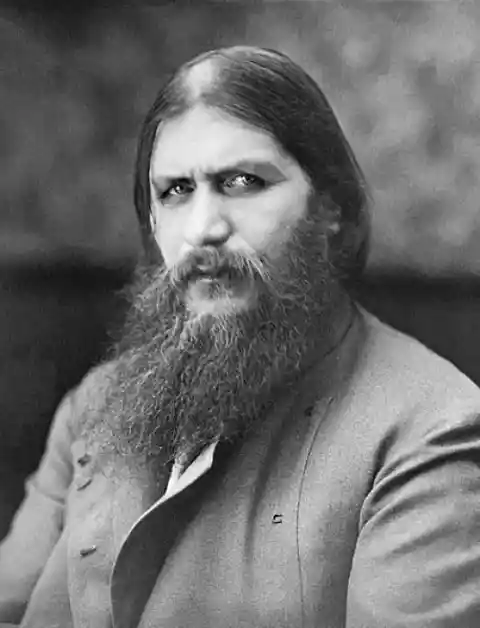
Miraculous Recovery
Surprisingly, Rasputin’s techniques seemed to work for the royal prince. Alexei was able to survive an injury that doctors believed would be responsible for his death but Rasputin’s prayers for him worked wonders for him and Alexei recovered miraculously the next day and the Tsarina was made an instant convert. After this incident, Rasputin came closer to the royal family and had a major influence on the life of Tsar and his wife.
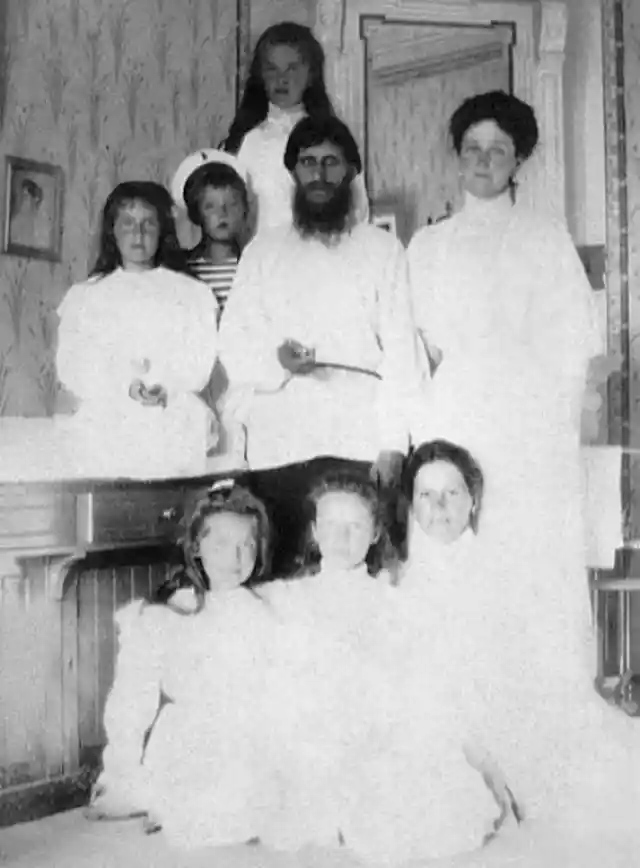
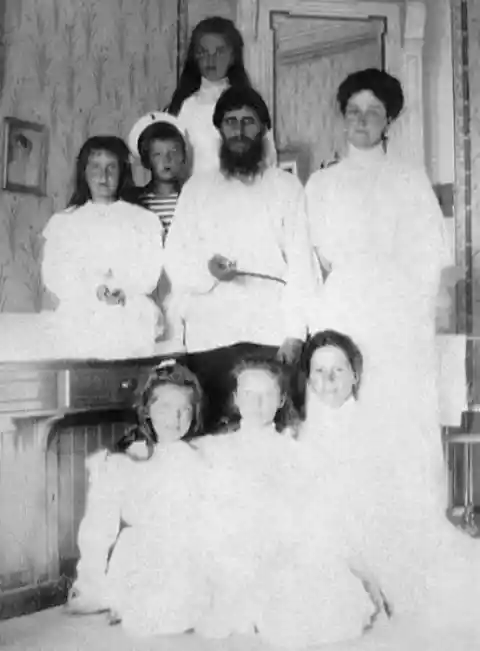
The French Tutor
Rasputin was not the only one who was close to the royal court. Besides him, the wild-eyed mystic, a group of loyal physicians, cooks, footmen, and other staff followed the Romanovs wherever they went and made sure that they led a comfortable life and allowed them to concentrate on their Imperial duties. One among the people who were close to the Royal family was Pierre Gilliard who taught French to the children. The tutor was born in Swiss and helped the Royal couple in the upbringing of children and was no less than a father figure to children. He was so fond of the royal family that when they were deposed, he followed them voluntarily into exile. But for the Royal children, their life had other things besides the French lesson with Monsieur Gilliard.

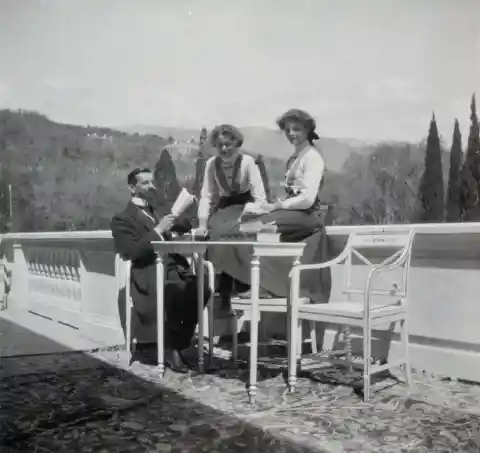
Alexander Palace
The children majorly spent their childhood at the Alexander Palace at TsarskoyeSelo which was about 24 kilometers south of Saint Peterburg. Even though the family lived in a grand building, still they led an earnest and modest life. Children were addressed by their first names by house staff and visitors. They slept on military-style cots and took cold baths every morning. Whenever they had guests at their place, they would gather around a common table and eat informal meals and were not waited upon by servants. Besides all this, OTMA did not exactly have a normal childhood.
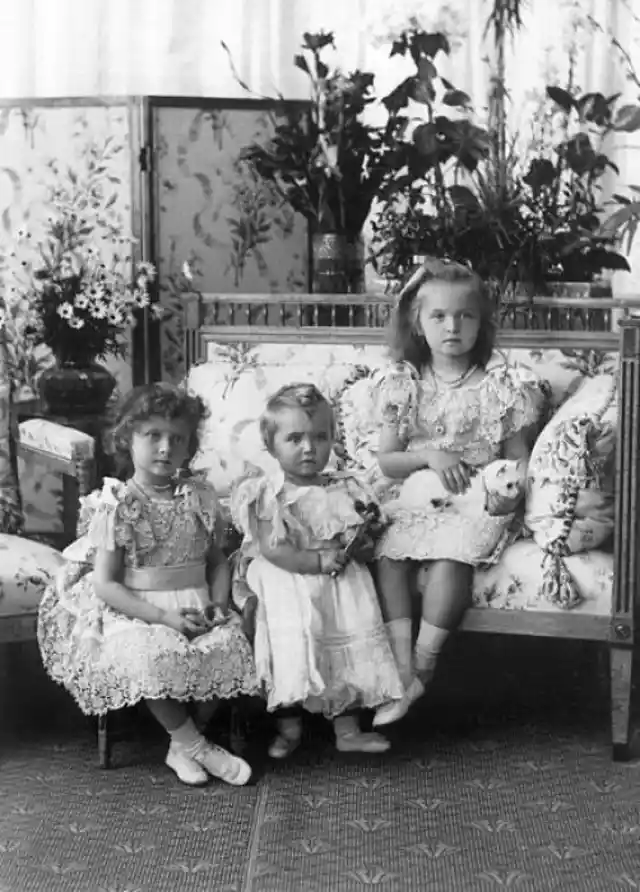

Travelling The World
The Romanov children lead a life that was different than the lives of others. The Tsar and Tsarina traveled abroad frequently with their children. So, the children got to explore the world from a very young age. In this picture, you can spot Grand Duchesses Tatiana (left) and Olga (center) with Anna Vyrubova, their mother’s lady-in-waiting and best friend, during a summer cruise in Finland, ca. 1908.
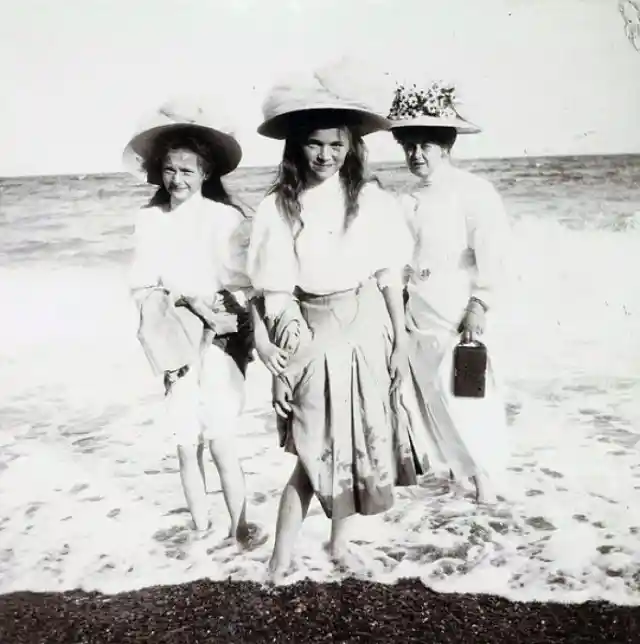

World Tour
While traveling, the royal children saw many parts of Europe during their lives. In his early life, before becoming Tsar, Nikolai himself traveled extensively and set out on a world tour. In his tour, Nikolai got the opportunity to explore extensive parts of the island nation including Egypt, India, Singapore, Bangkok, and Japan. He also got himself inked on his right arm with a dragon tattoo. Unfortunately, he could not complete his trip as he was attacked by a deranged Japanese police officer who tried to kill him. This incident later came to be known as the Ōtsu Incident.
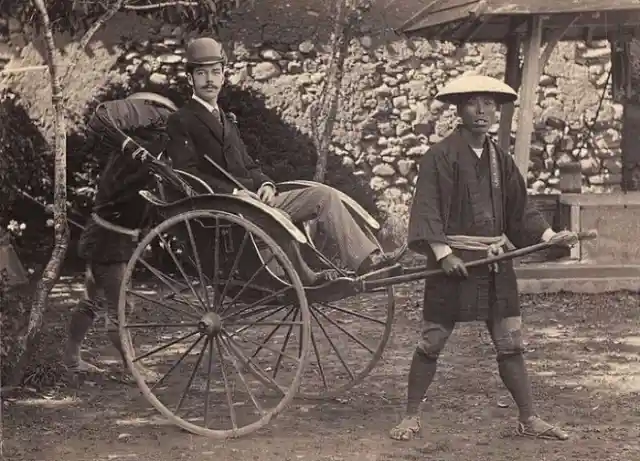
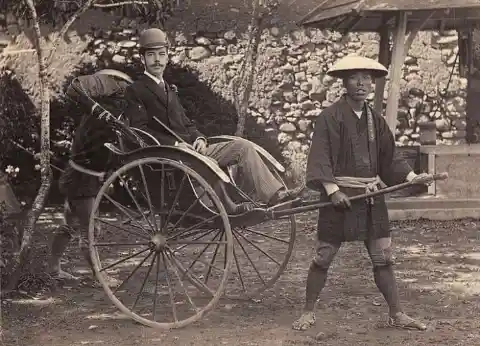
The King And Nicholas II
When Nicholas II visited the Far East, his trip didn’t turn out to be one-sided. Later, when King Chulalongkorn of Siam whose reign was marked by the modernization of Siam, governmental and social reforms, traveled to Europe in 1897, he ensured to meet with Nicholas II in Saint Petersburg. King Chulalongkorn was the first Siamese monarch to do this as he wished European recognition of Siam as a fully independent power.
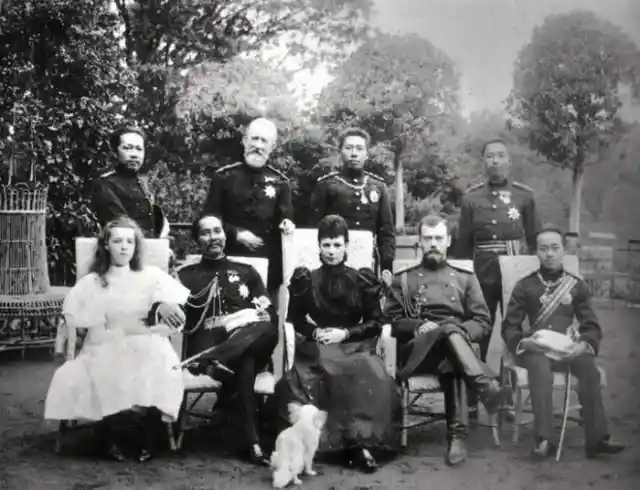
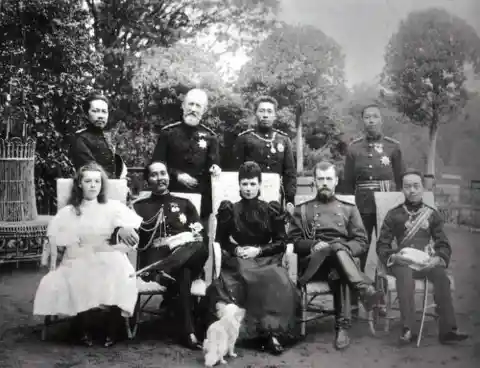
An Unusual Pastime
Besides, traveling abroad, another thing that set them apart from the other children in the world was their unusual pastime: their own military units. For example, Tatiana was provided the honorary rank of colonel and was allotted a regiment of soldiers- the Vosnesensky Hussars. Olga was also allocated a unit of her own, and the Big Pair’s military units gave them an unusual pastime of inspecting the units and chatting with the soldiers.
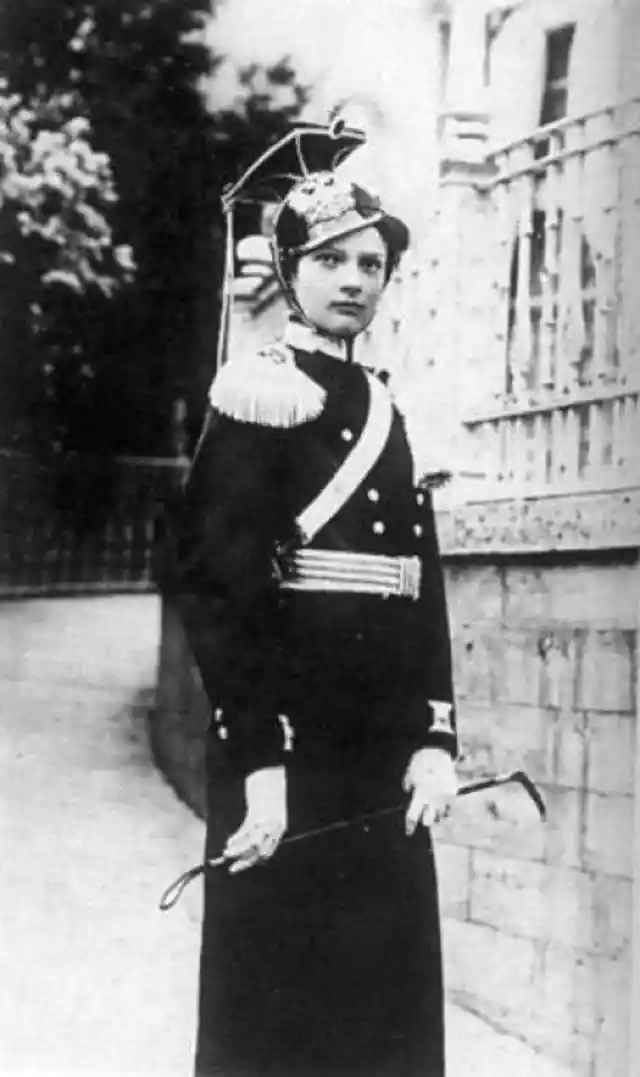
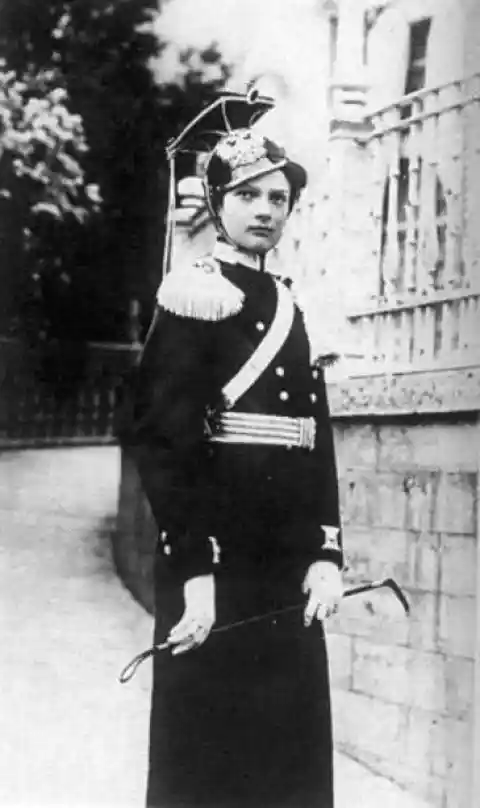
Grand Duchess’ Heartbreak
When Olga was nearly 18 years old, she developed her love interest in Pavel Voronov who was a young handsome junior officer from the imperial yacht. But unfortunately, their relationship could not work because of their differing ranks. Nevertheless, she was upset when he married another woman.

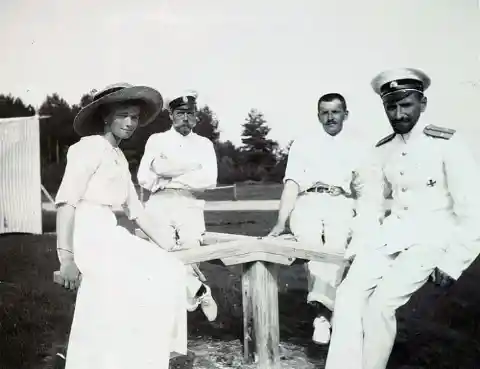
Other Hobbies
The Romanovs led a simple and generous life except for the times when they were traveling or on official Imperial duties. They had their unique hobbies to spend their time with. For example, Anastasia was fond of embroidery work and spent time with her mother Alexandra, and learned how to do it. Besides, photography was also one among many hobbies of the Romanovs family. The royal family loved photography so much so that a photo workshop was created in Tsarskoye Selo, an Imperial Residence outside the capital St. Petersburg.
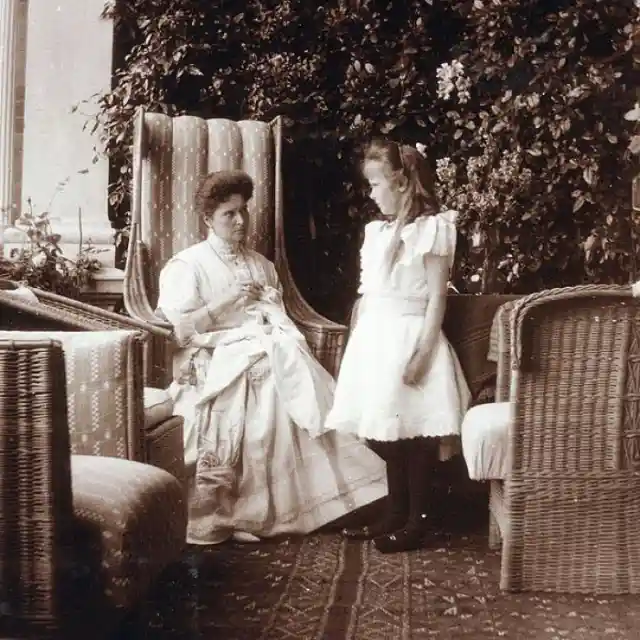
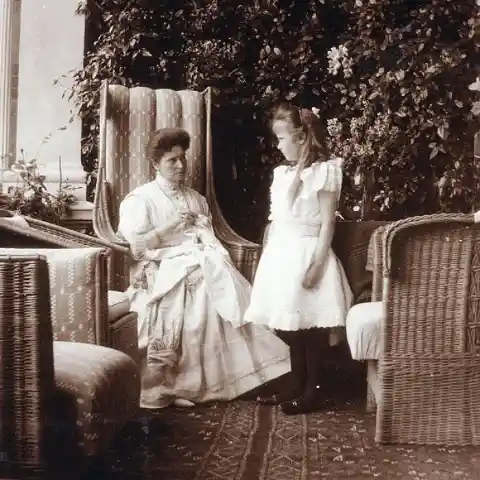
Individual Personalities
Even though Romanov sisters were addressed as one group- OTMA, still each one of them had their individual personalities. Olga was a quiet and contemplative individual while her sister Anastasia was a happy-go-lucky and active girl. Olga was such an avid reader that many times she would read books that her mother bought for herself before she had the opportunity to read. Then, she would make a joke of it by saying that she was making sure that they are appropriate to be read by Tsarina.
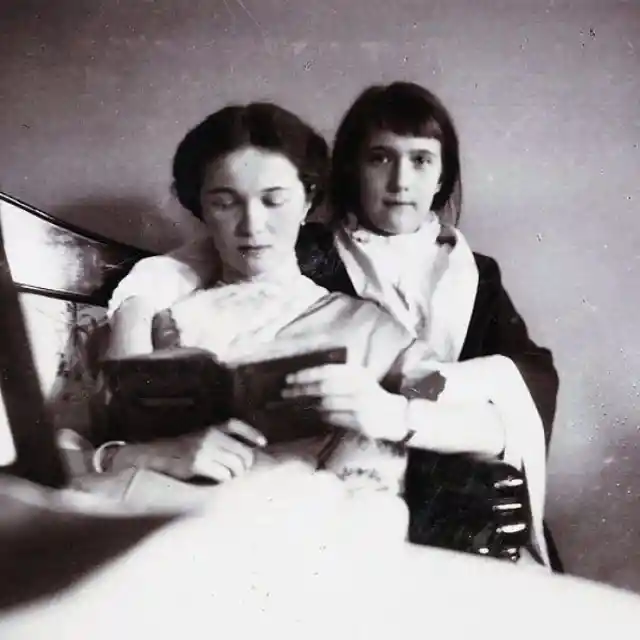
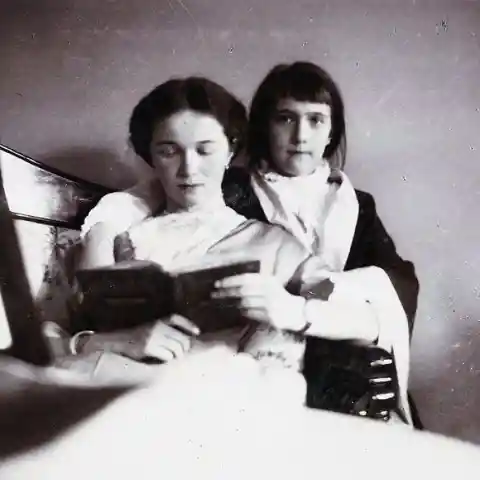
Surviving Typhoid
In 1913, OTMA had to shave their hair off after they had been infected with typhoid fever. But for Olga, she was not suffering from typhoid first time, earlier in 1901, she had typhoid fever and was restricted to the nursery for many weeks. In this picture you can see Tatiana spending time with her mother in 1914. At this time, Tatiana’s hair was just beginning to grow out after her illness got over.
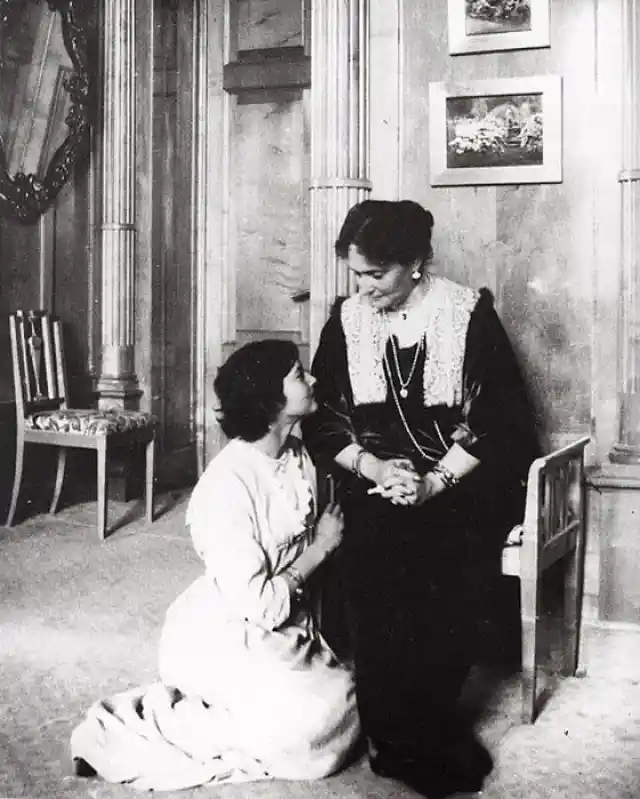
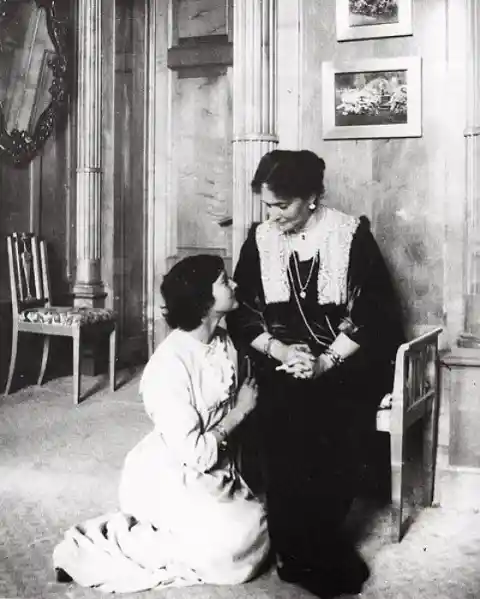
Sailing Trips
While traveling abroad, the royal family preferred way to travel was aboard the Danish-built Imperial Yacht Standart. In the summer of 1912, the family set aboard on the Standart during their summer cruise in the Finnish Skerries. But sailing trips didn’t always turn out to be happy and with good memories.
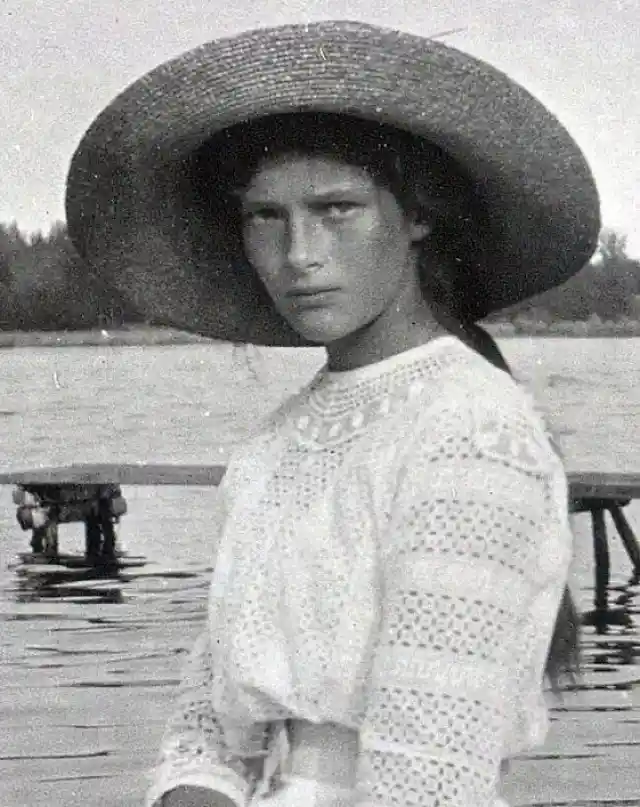
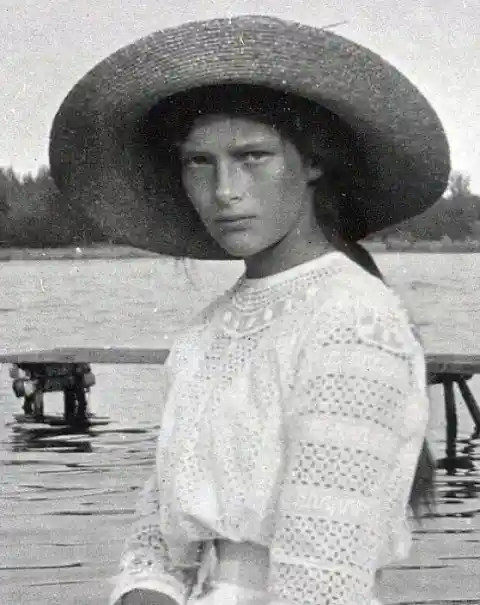
Onset Of The End
After two years, in 1914, while the royal family was on a vacation at the yacht, they received the news of the assassination of Franz Ferdinand- and the firing shot of World War I. Later after one month, the Austro- Hungarian Empire declared war on Russia’s ally Serbia, Russia entered I, and it soon turned the lives of Romanovs.

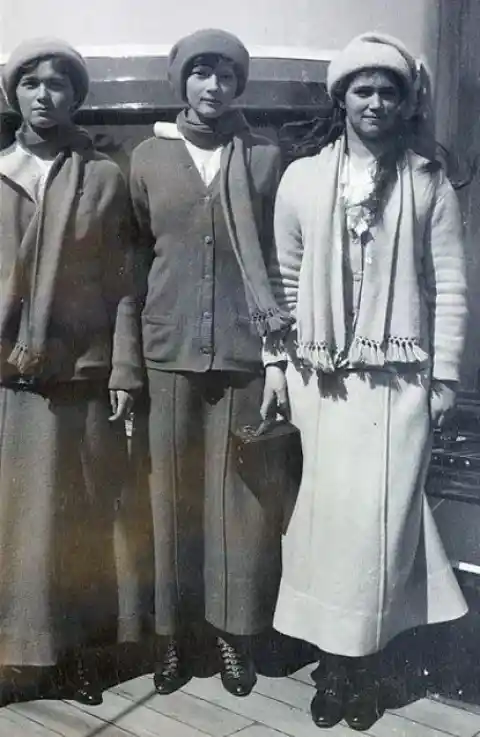
Preparing For War
At the onset of WWI, being patriots, the royal family contributed their efforts in the war. Being trained nurses with Red Cross, Tsarina Alexandra, Olga and Tatiana volunteered in Saint Petersburg and started treating Russian soldiers who were wounded in the war.
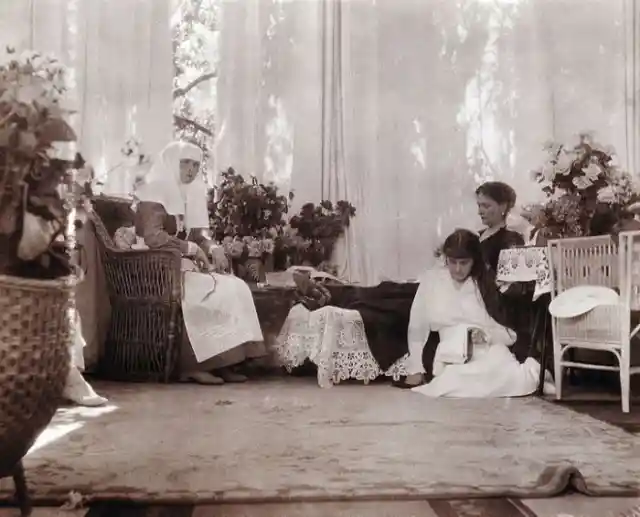
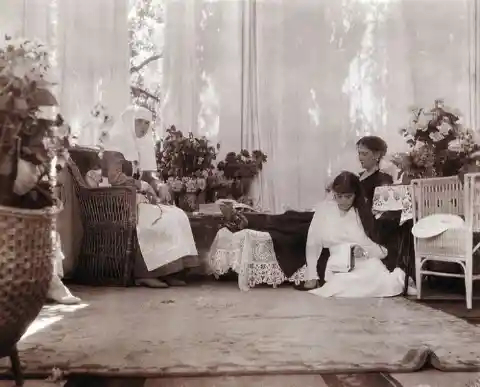
Performing Duties As Nurse
Performing duties as a nurse was not easy for Olga as she was a sensitive girl, however, Tatiana was a little brave and did it effortlessly. While on one hand, Olga performed administrative work at the hospital, on the other hand, Tatiana performed more complex medical procedures and did all the “dirty work” alongside the nurses she worked with. When Tatiana was performing her duty, she fell in love with a soldier Dmitri YakovlevichMalama, but unfortunately, he died at the end of the war.
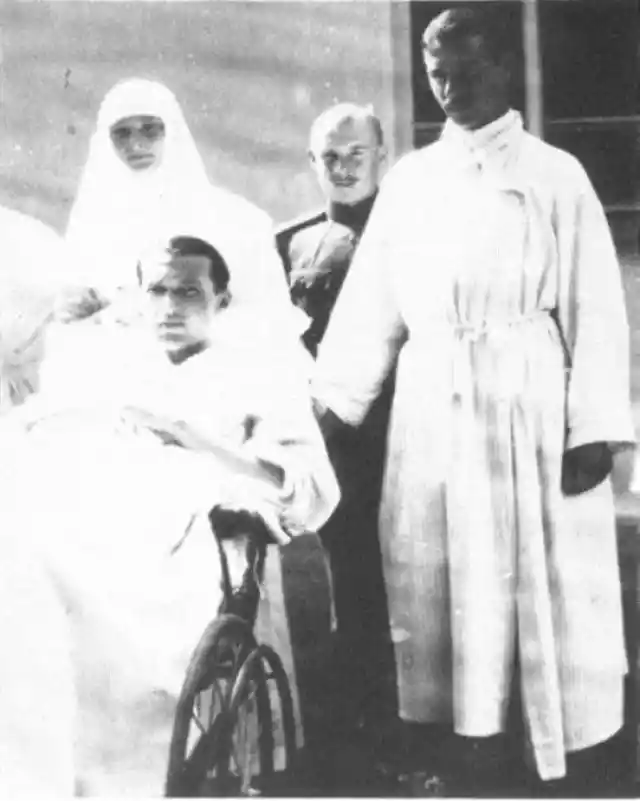

During The War
Before the onset of the war, Russia fought Japan in 1904-05 as an outcome of which, the military and regime were weakened. Besides, it led to social unrest and by the time WWI broke, it was visible that the public no longer favored the Tsar, specifically, when they saw Russia was not winning the war quickly. Later in 1916, royalists within the government warned Tsar that revolution was approaching, but Nicholas refused to sanction further constitutional reform.
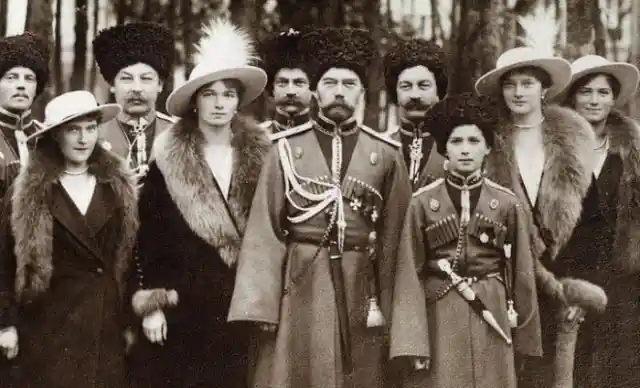
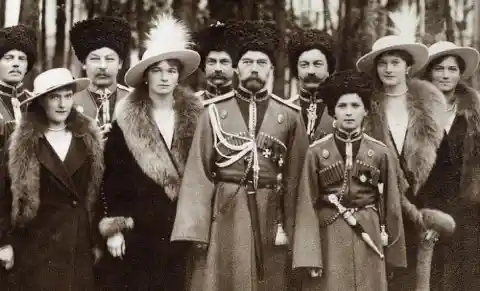
Visiting Yevpatoria
In May 1916, Nicholas II, Alexandra, and their children Alexei, Olga, and Maria visited Yevpatoria alongside Imperial household minister Vladimir Frederiks. Being the household minister, Vladimir Frederiks was responsible for the administration of the royal family’s personal affairs and arrangements and also awarding of Imperial honors and medals.
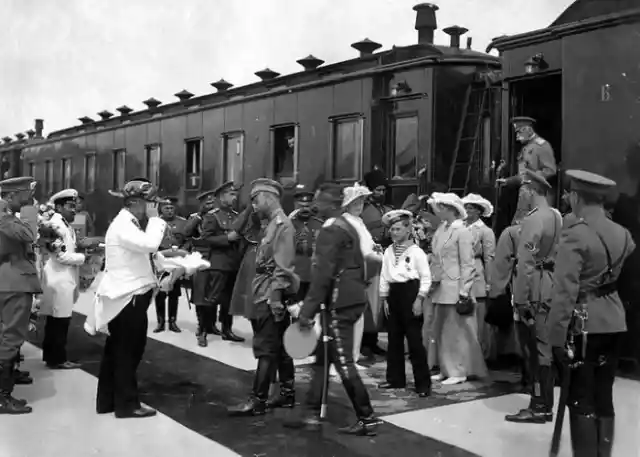
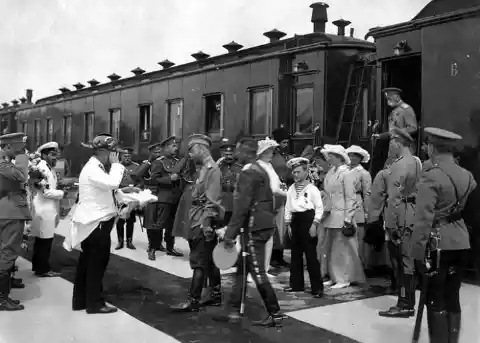
Visit To Sevastopol
The official tours of the royal family continued. In the year 1916, Grand Duchesses Anastasia, Tatiana, Maria, and Olga visited Sevastopol with Empress Alexandra. With their frequent visits, the royal family hoped to convince the public that the Tsarina was not supporting Germany in the war.
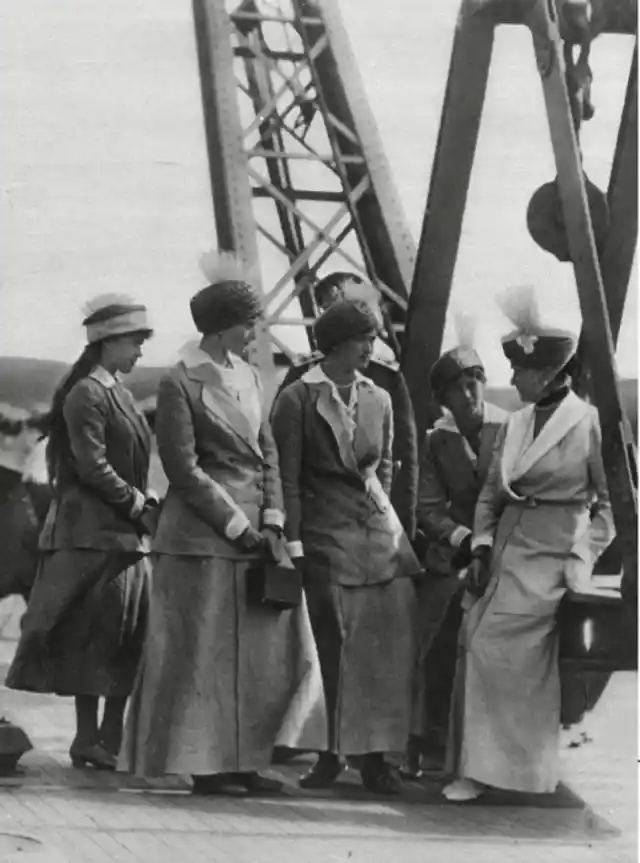
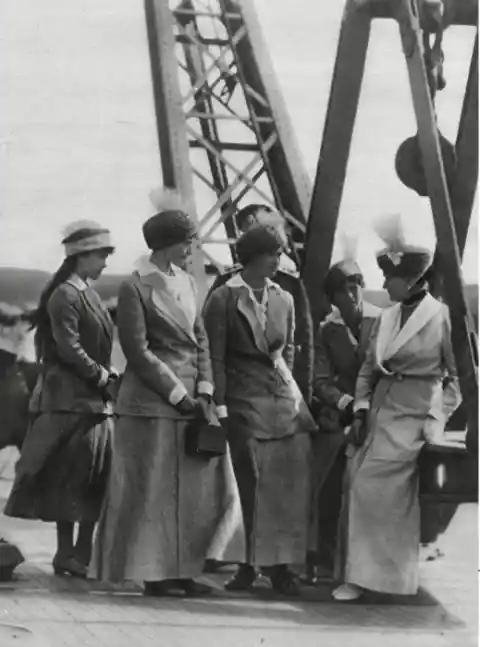
Living A Sheltered Life
Even though Tatiana and Olga were not spoiled, still they had lived somewhat sheltered lives. In some areas of life, they appeared so naïve that people took it for their ignorance. In one such instance, one day when the regular driver who was supposed to pick Tatiana and Olga up from their volunteer work at the hospital and drop them back home was replaced by a substitute, the two sisters took it as an opportunity and went shopping in town. Although the Russian coins had their father’s face on them, still the girls had never used money before and they did not know how to behave in stores. However, the girls had no clue that their ignorance of practical life was coming to an end soon.

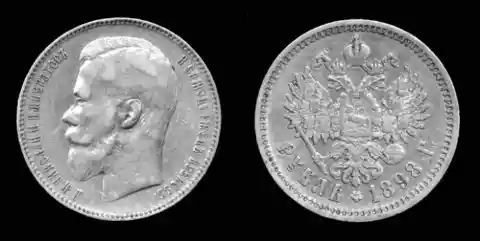
Serving On Front Lines
While the two eldest sisters worked as nurses, Maria and Anastasia were not that old that they could participate in medical operations, so, they volunteered at hospitals, entertained wounded soldiers, and helped to keep their spirits high. At that moment, when Rasputin recommended and Alexandra insisted followed by an argument of the mystic with the military’s Chief of Staff, Tsar Nicholas II left for the front lines and took command of the army from Stavka as the new commander in chief. Soon after, Alexei, the young prince joined him to learn about the military command. But little did Tsar know that while he was away on the front lines, trouble was approaching him back at home.
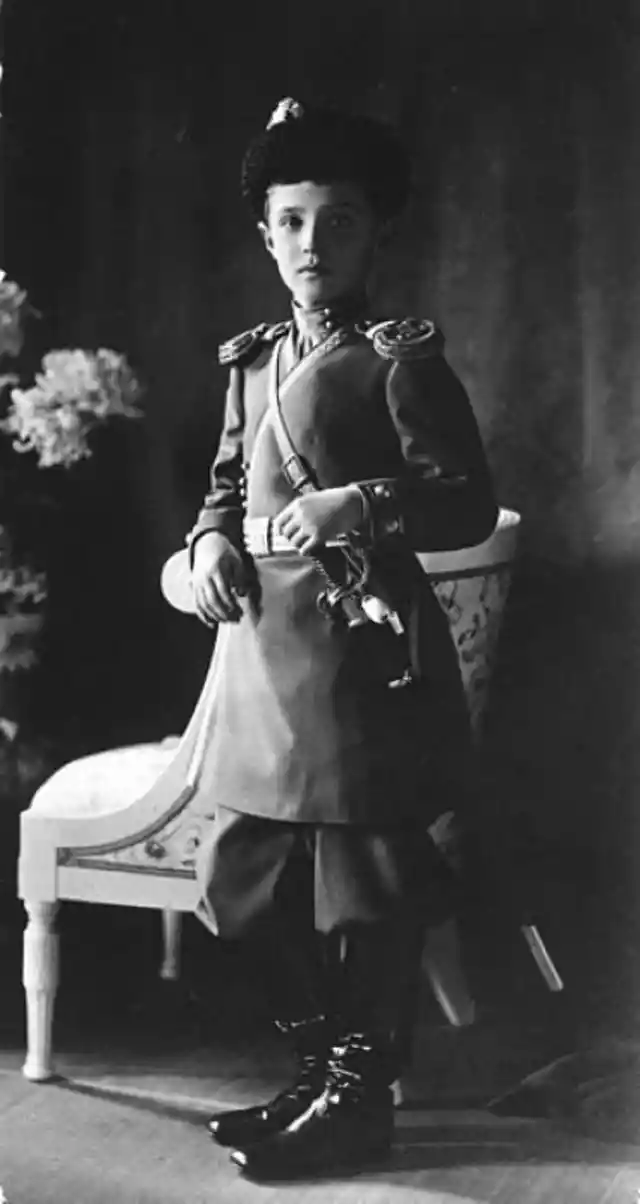
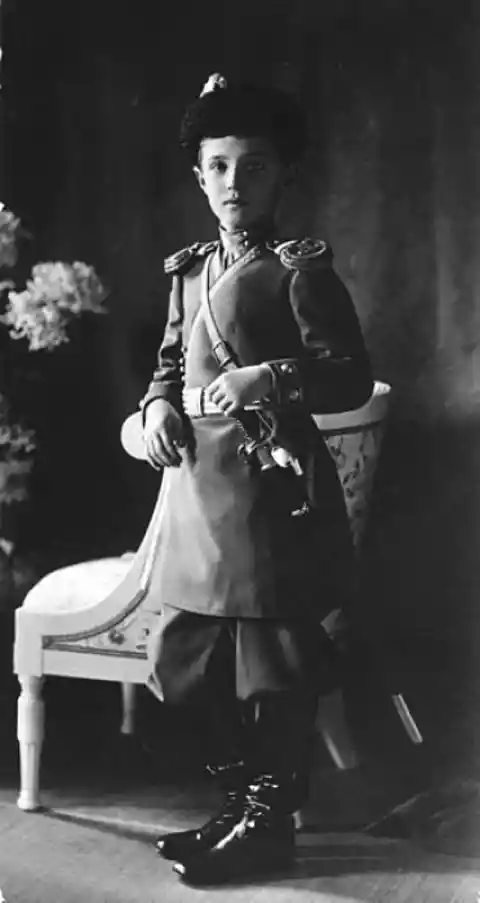
Renouncing The Throne
At the end of the February Revolution, in March 1917, Russian Revolutionaries marched upon the palace and forced Tsar Nicholai II to step down for fear of his and his son’s life. The other members of the family were put under house arrest at their palace in TsarskoeSelo.

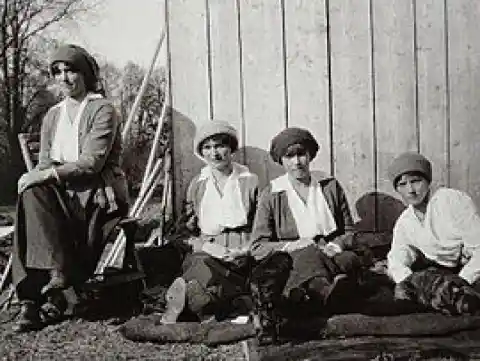
House Arrest Of The Family
The initial phase of the Romanovs' lives after the revolution was commanded by their supporters. As the royal family feared their lives and to keep themselves alive, they voluntarily went to house arrest and believed that it would continue their former lifestyle while they would give up their power. During their time of house arrest in TsarskoyeSelo, the family had their privacy inside the palace, however, their walks in the grounds were strictly regulated. Members of their domestic staff were allowed to stay if they wanted to and culinary standards were maintained.
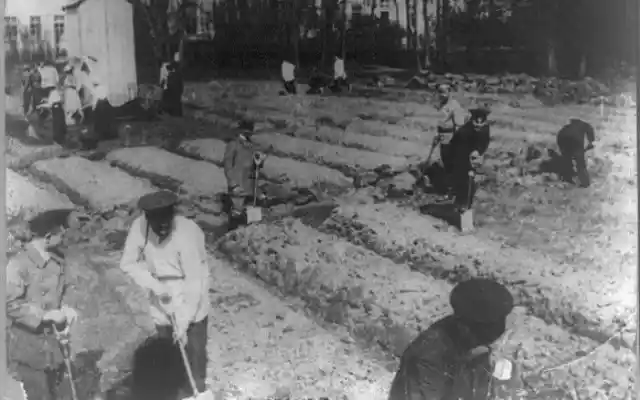

Remaining Captive
Living in captivity was not easy for the family members as they found the physical toil of life too much to bear, while on the other hand, Tatiana who was a practical and level-headed person, managed the captivity well. She took care of the family and came up with a genius plan while doing so.
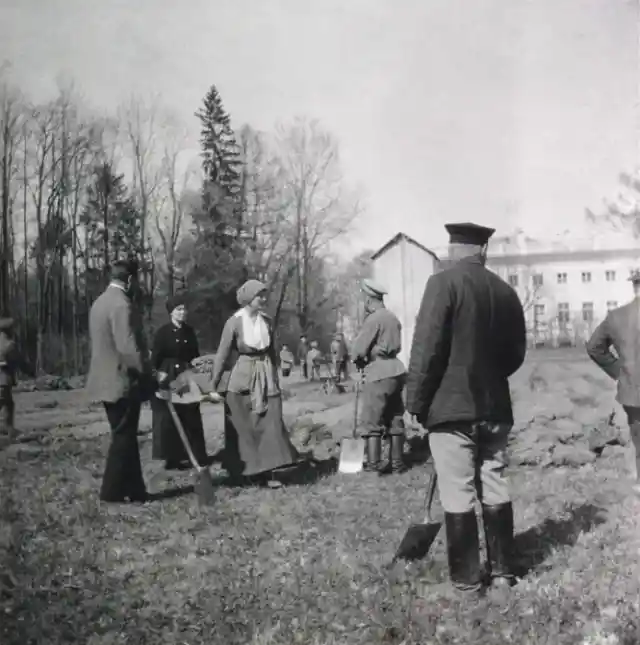
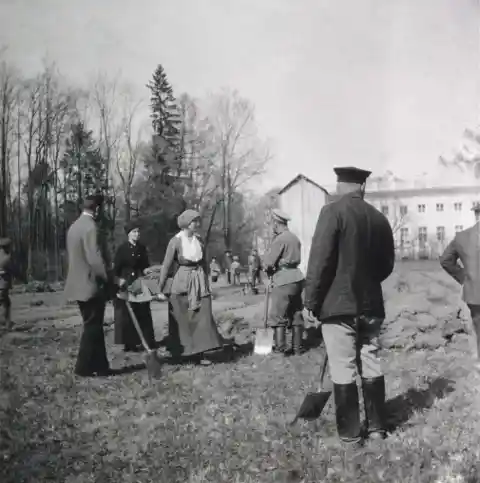
Alexei In House Arrest
For Alexei, the house arrest was a lot to take as he used to complain in his diary that he was “bored” and begged God to have “mercy” on him. Getting older, he even tried to convince fate and injure himself purposely. This picture reveals Alexei Nikolaevich and Tatiana Nikolaevna under house arrest in 1917, Alexei was still wearing his military uniform.
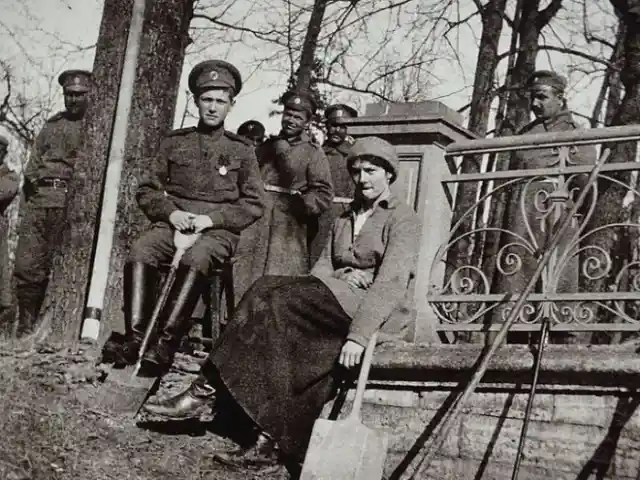
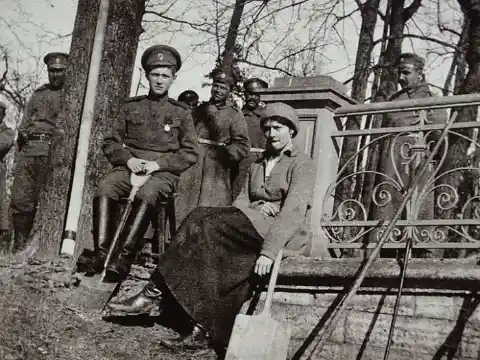
Ortipo- The Dog
Dmitri Malama, who was a wounded officer at Tatiana’s infirmary, gifted her a dog who was very close to her heart. She had named the dog “Ortipo” which was also the name of Malama’s favorite horse. Ortipo used to follow Grand Duchess Tatiana and the Romanov family as far as Tobolsk. In this photograph you can spot Grand Duchess Anastasia and Tatiana with their dog Ortipo in captivity.
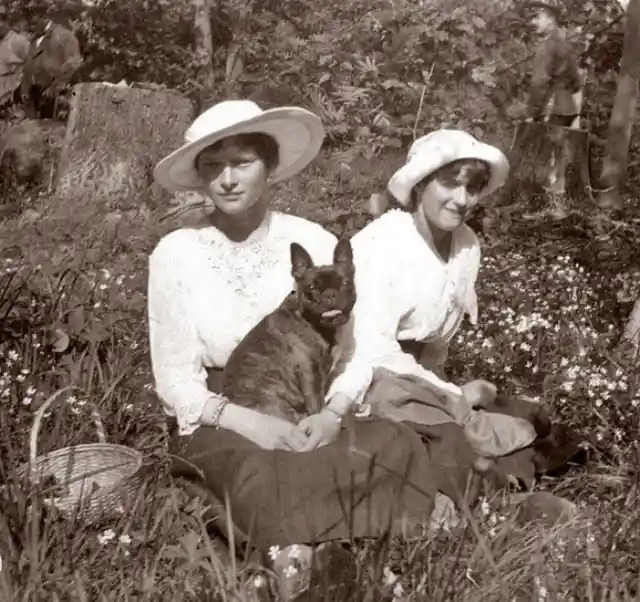
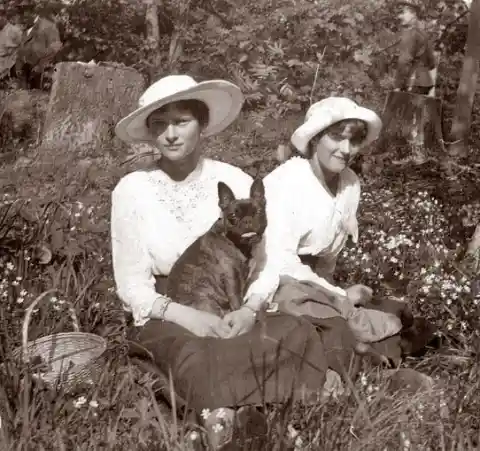
Writing Letters
When Olga was held captive, she used to write letters to a friend and often mentioned in it, "Darling, you must know how awful it all is." Back in 1917, the children caught measles. Olga contracted pleurisy too. In the picture you can see Grand Duchess Olga, Tsar Nicholas II, Grand Duchess Anastasia, and Grand Duchess Tatiana at Tobolsk (from left to right) in the winter of 1917-1918.

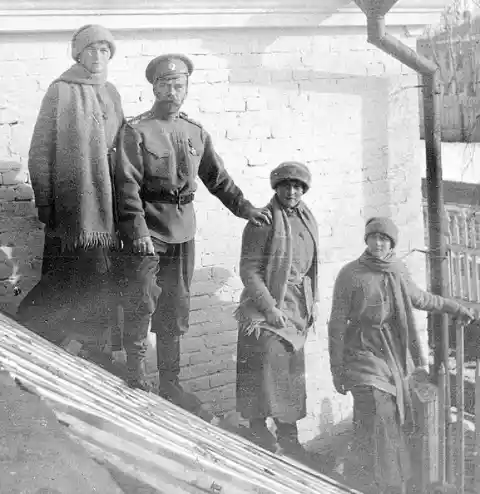
Precious Stones And Jewels
Tatiana had cleverly sewn precious stones and jewels into the lining of the family’s clothing. She hoped that it should some of those stones would turn their fortune and help them escape.
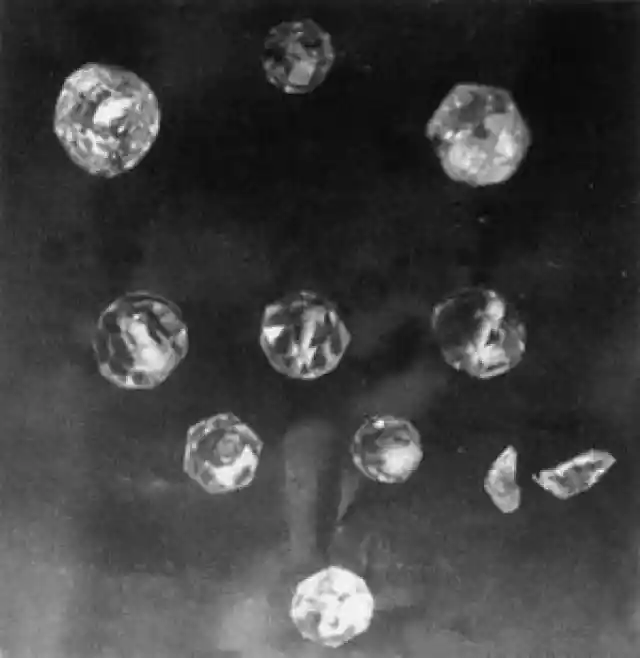
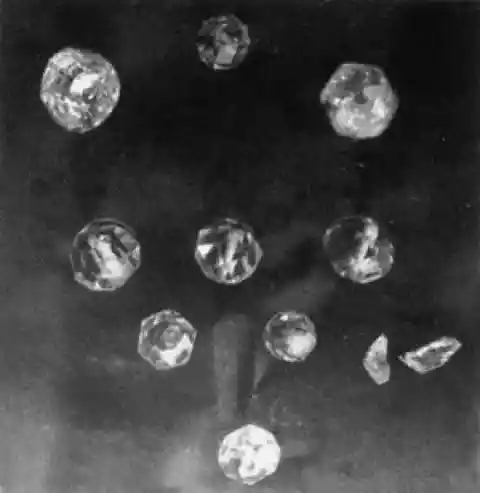
Leaving The Country
The new provisional government wanted to allow the Romanovs to leave the country, and Nicholai II had asked for asylum in the UK but revolutionary sentiments were arousing. To provide safety to the family, the provisional government moved the family to Tobolsk where they to continued to live in comfort.

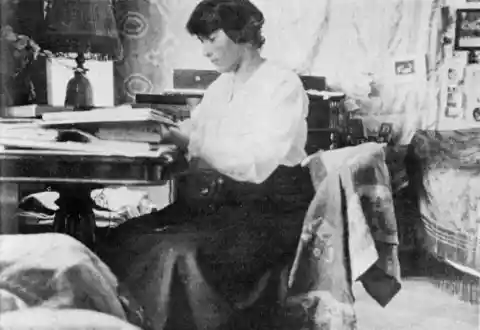
Town Of Tobolsk
Later, the Romanovs were relocated to the town of Tobolsk in Western Siberia. While they were held captive, the royal family kept themselves busy with reading books, exercising, and laying games but out of them, Nicholas especially loved chopping firewood. But their peace had a timeline to it as by 1918, the Bolsheviks and Lenin had risen to power which turned the royal family’s fate.
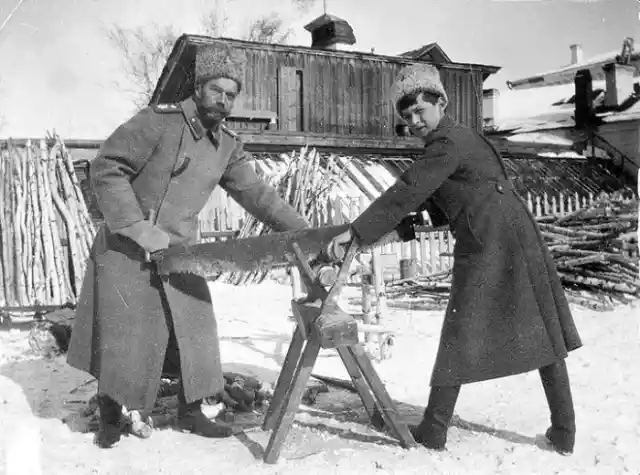
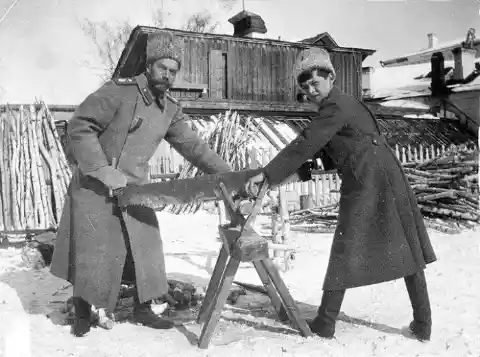
Descend Of Dynasty
On July 17th, 1918, the royal family was taken to the basement of Ipatiev House in Yekaterinburg to which they have been shifted and executed by a firing squad. In 1919, investigators had to tear the walls apart to search for bullets and other evidence.
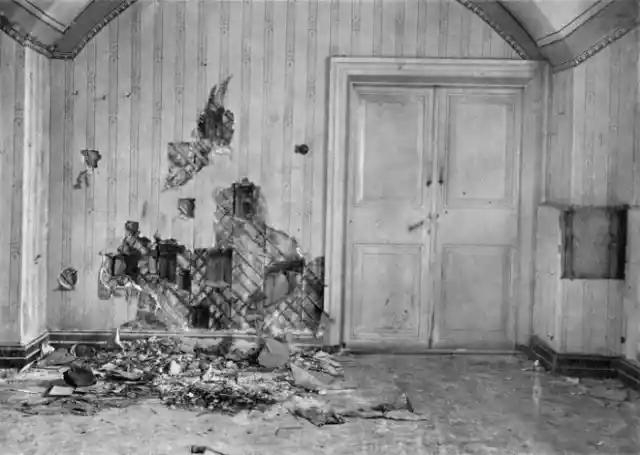
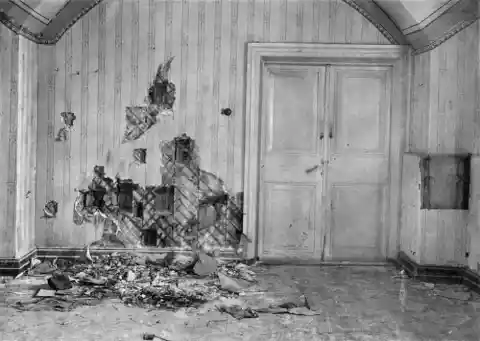
Not By Themselves
The Romanovs were not left all by themselves as their friends and loyal subjects followed them. Tutors Catherine Schneider and Pierre Gilliard, Imperial advisor Count Ilya Tatishchev, Countess Anastasia Hendrikova, and Prince VasilyDolgorukov followed the royal family all the way to Tobolsk, however, they were not allowed to join them at Ipatiev House. All of these subjects except for Gilliard were then murdered by the Bolsheviks.
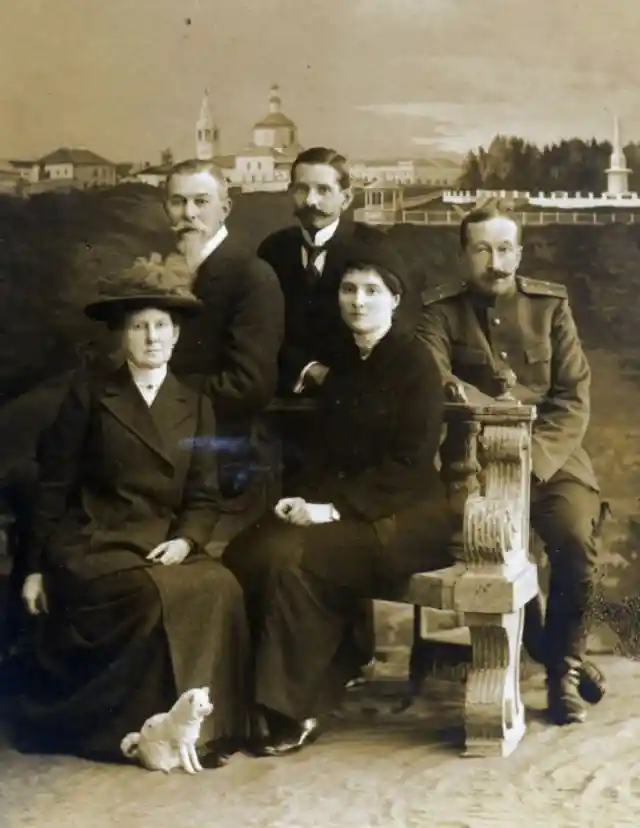

Yevgeny Sergeyevich Botkin
One of the people who followed the Romanovs into their confinement was Yevgeny Sergeyevich Botkin who was the court physician for Tsar Nicholas II and Tsarina Alexandra. In their eviction, he at times treated Alexei for hemophilia-related complications. Being a good friend to Nicholas II, Botkin had a feeling that it was his responsibility to his patients and his country. Later, he was murdered with the family by guards at Ekaterinburg on 17 July 1918.
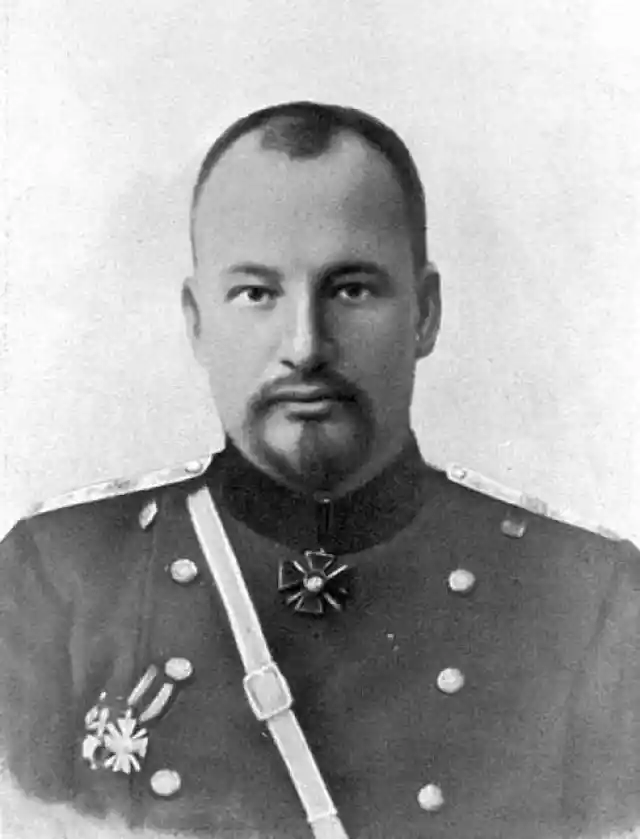
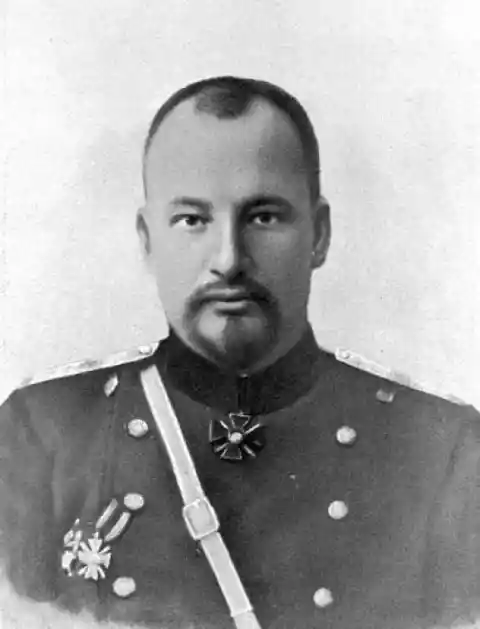
Anna Stepanovna Demidova
Another loyal member of the Romanov’s court who joined them in exile was Anna StepanovnaDemidova who was a maid in the service of Tsarina Alexandra. Not only did she stay with the family but also executed with them. Later in 1981, Anna was canonized as an Orthodox martyr by the Russian Orthodox Church Outside Russia (ROCOR).
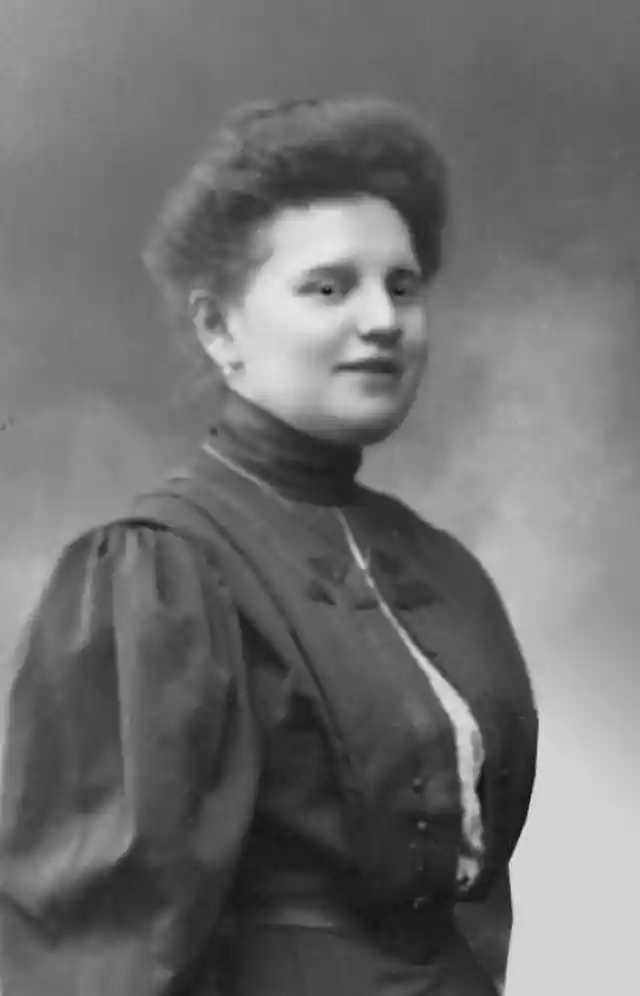
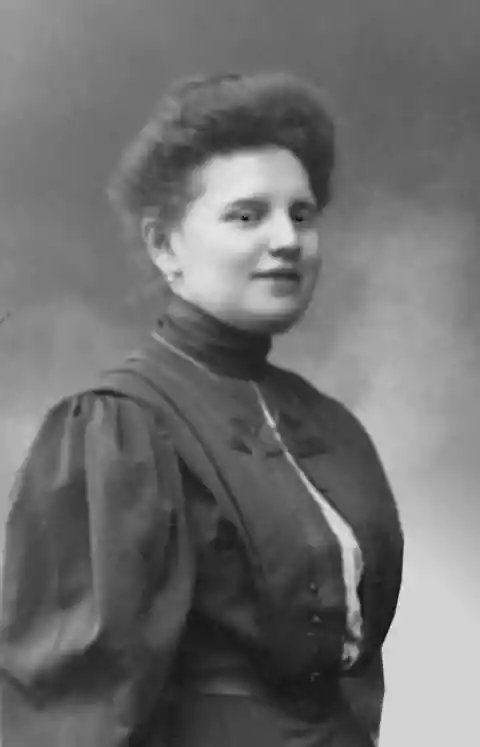
Alexei Trupp
Alexei Trupp was born in 1856 and was the Head Footman in the household of Tsar Nicholas II of Russia. He was also one of the other servants who were loyal to the family and joined them in their confinement. He was killed in July 1918.

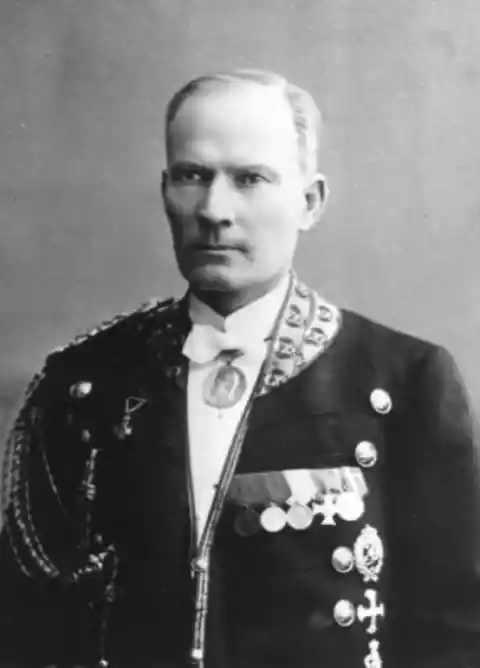
Ivan Kharitonov
Ivan Kharitonov was the head cook at the court of Tsar Nicholas II who also followed the Romanov family into exile following the Russian Revolution of 1917. He was executed with the royal family as well by the Bolsheviks on July 17, 1918, at Ekaterinburg. On July 17, 1998, a funeral was arranged in Peter and Paul Cathedral in Saint Petersburg for the Romanovs, their servants, and the other victims who were murdered eighty years before.
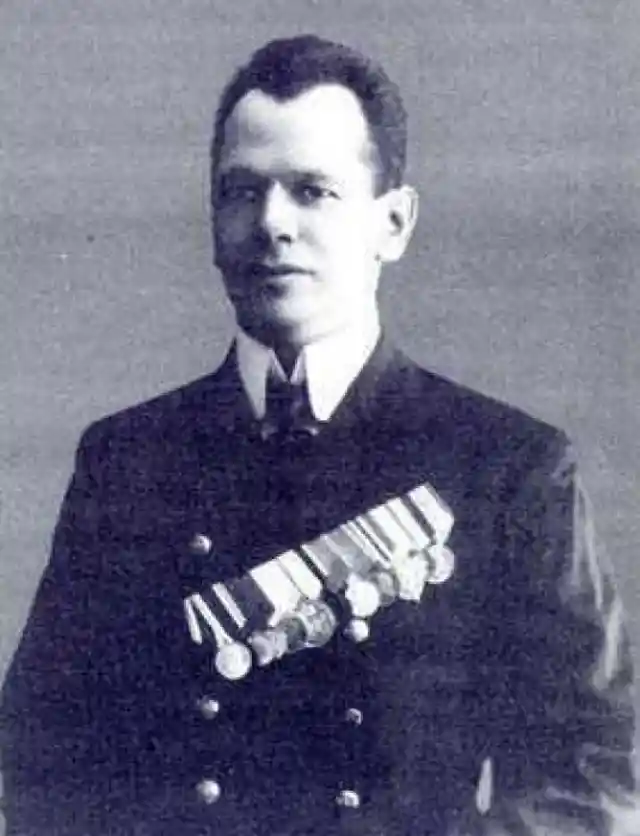

After The Collapse
For a long time, the Romanov House, their descend and their deaths were forbidden subjects in the Soviet Union. It was considered as a sign of resistance to the Soviet government and any historic event that was somewhat favorable to them was censored. Yet the pull of the family and their heritage remains, and Ipatiev House became a site of pilgrimage. Unfortunately, the Soviet government was not willing to accept this and they finally demolished the house in the 1970s- but they could not stop the pilgrims from coming, and a simple wooden cross was placed over the ruins of the demolished house, and it was replaced every time it was taken down. Ultimately, after the fall of the Soviet Union, a church was constructed to commemorate the family’s sacrifice. In the present day, the Church of All Saints in Yekaterinburg is an ever-growing site of pilgrimage for hundreds and thousands of faithful Russian Orthodox believers- who have, since the 1980s, regarded the whole Romanov family as saints.

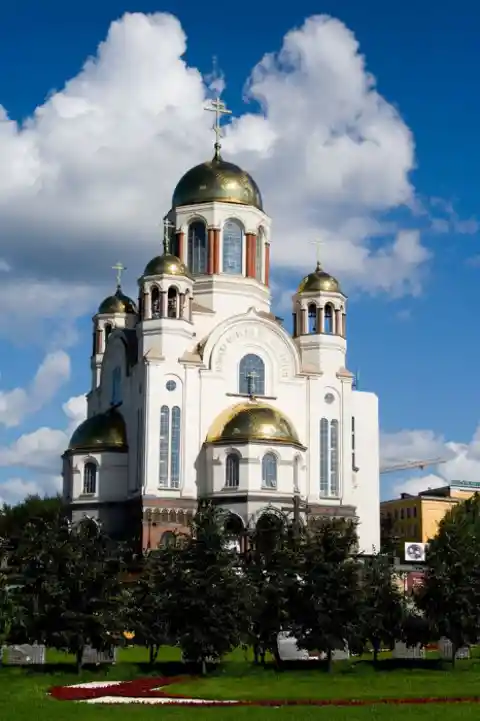
DNA Testing
Many years after the execution of the Romanovs, the family’s burial site was discovered which was kept secret from Russia’s Communist government. In 1991, after the fall of the USSR, the family’s grave was dug, and DNA tests were conducted. The DNA reports showed that it contained 9 bodies; the Tsar and Tsarina, 3 of the Romanov sisters, and 4 members of their entourage but there were no signs of the Tsarevich and one of his sisters. Along with this, there were rumors of Anastasia and Alexei’s escape which raised the hopes of many people that the family may yet survive in some way. But, in 2007, an additional grave was found, and after the DNA testing, the reports showed the bodies of a boy of around 13 and a girl of around 17 that had been ungraved were very much related to the rest of the Romanov family. In the present day, Alexei and Anastasia rest in peace with the rest of their family in Saint Petersburg’s Saints Peter and Paul Cathedral.
